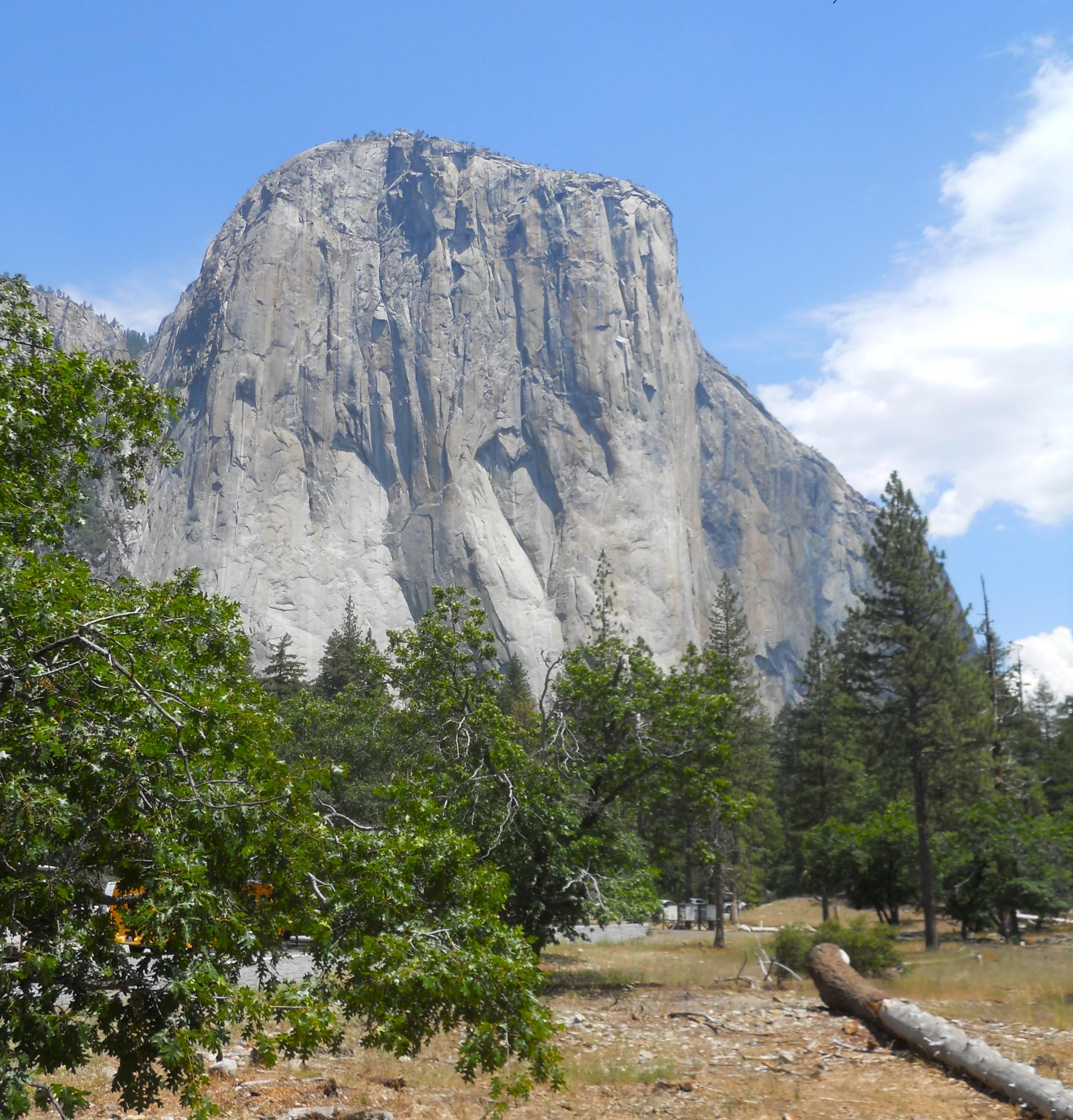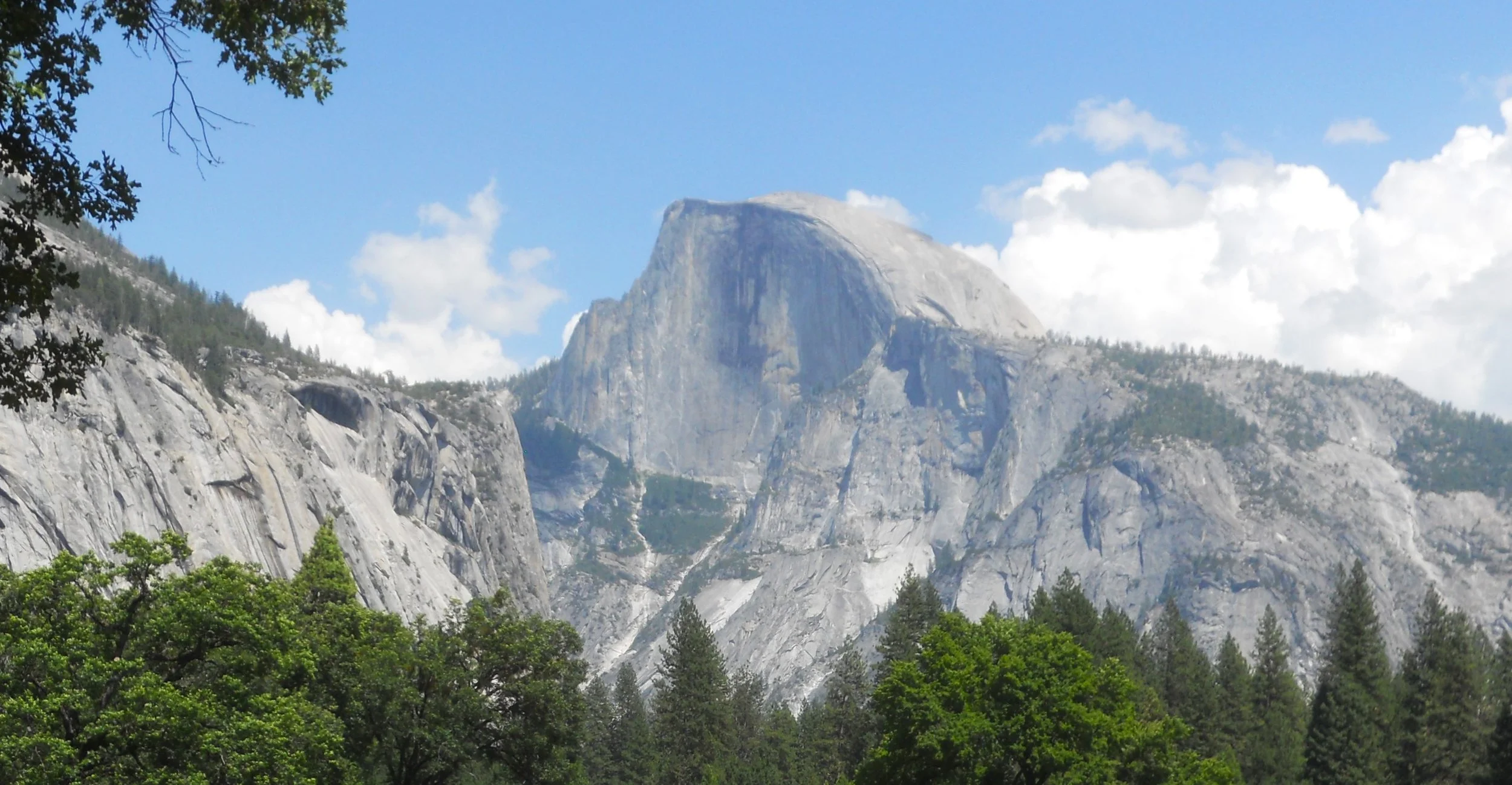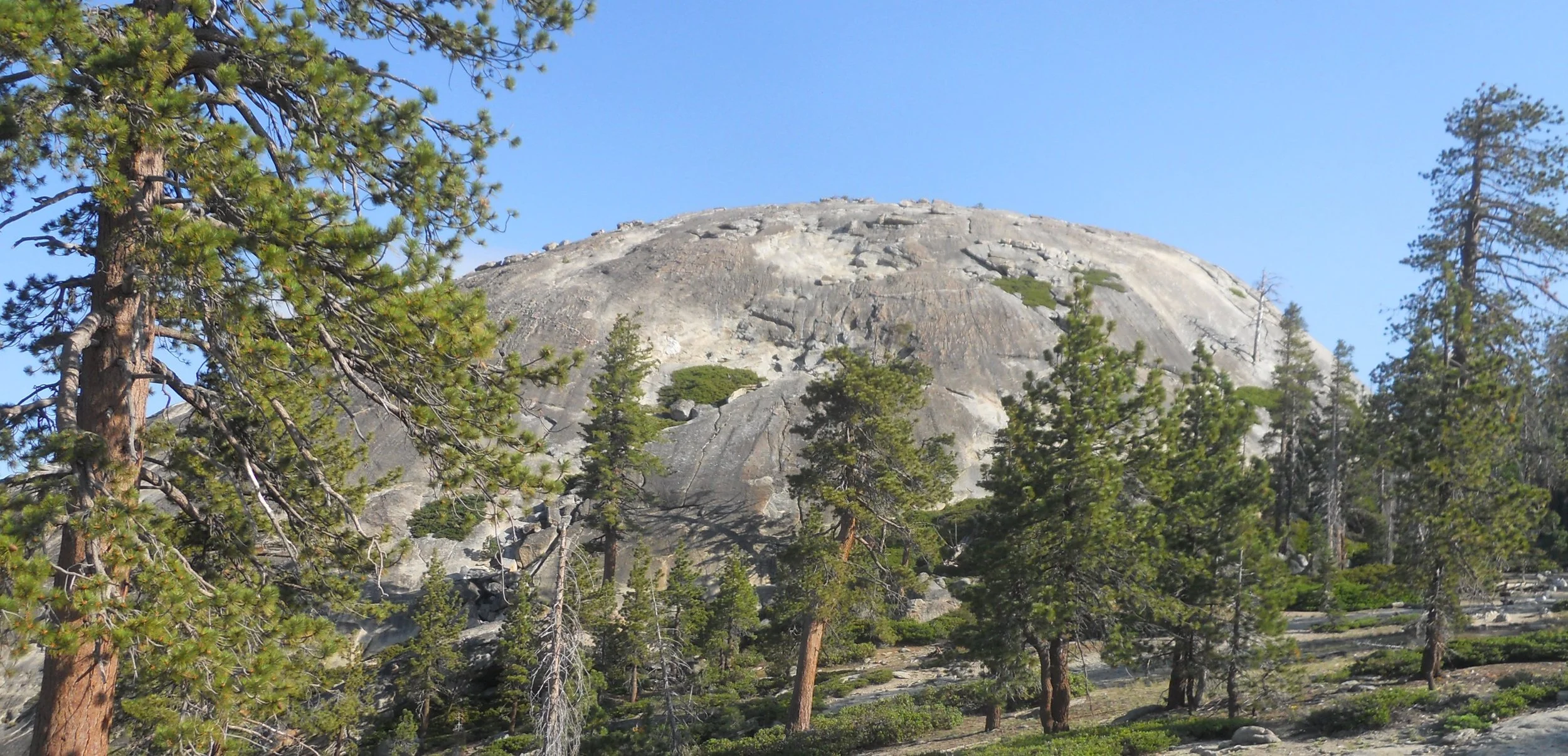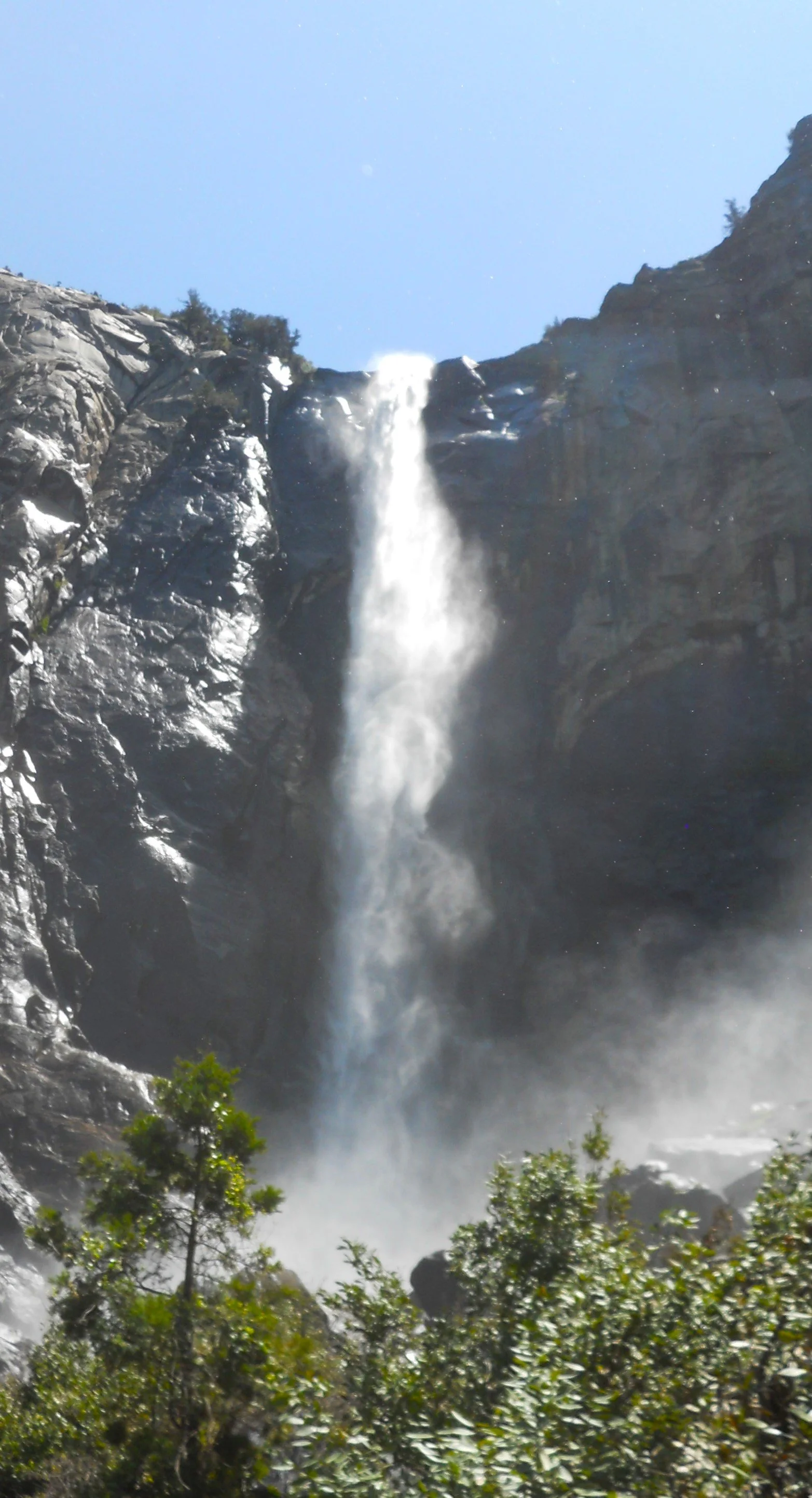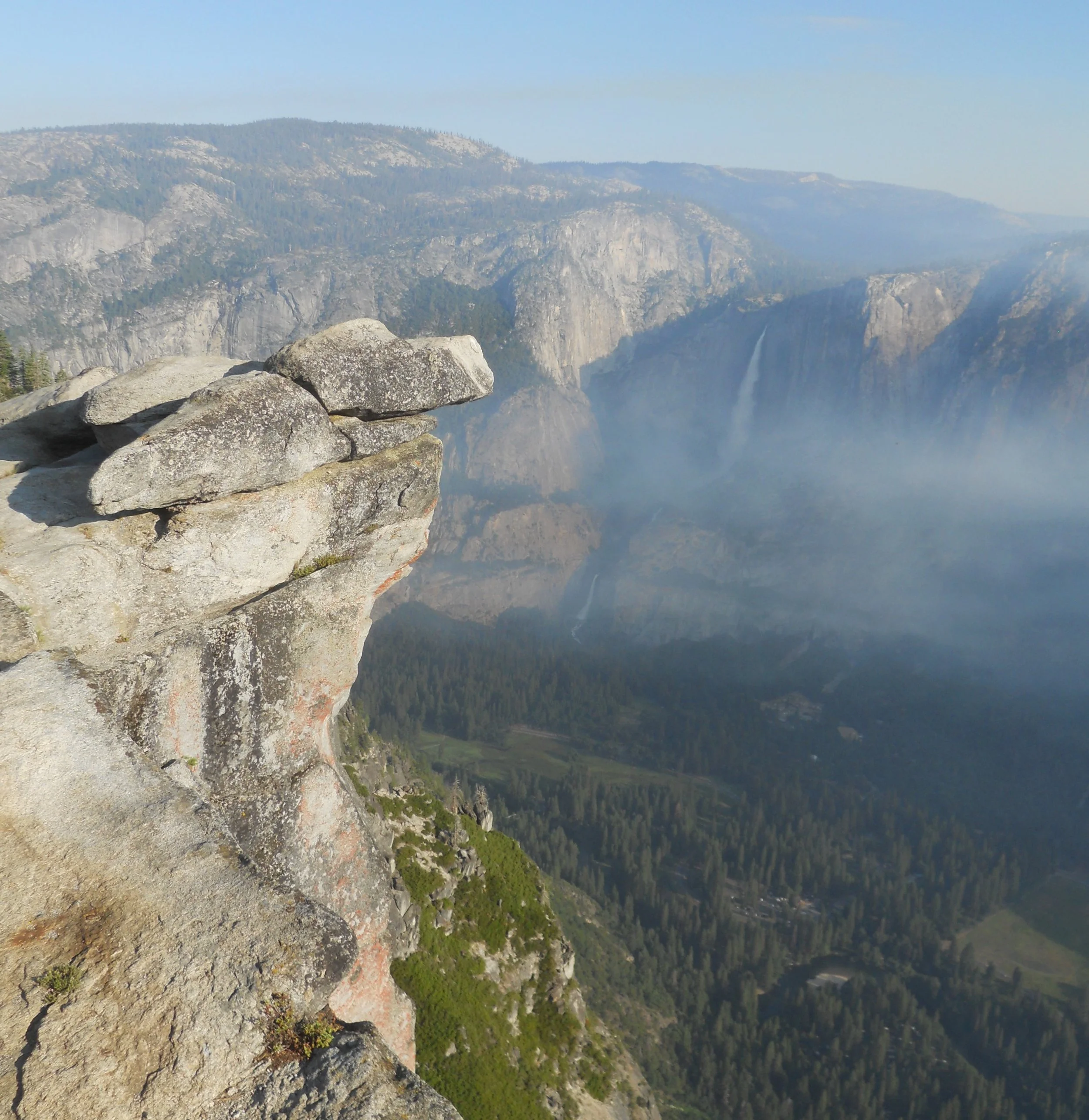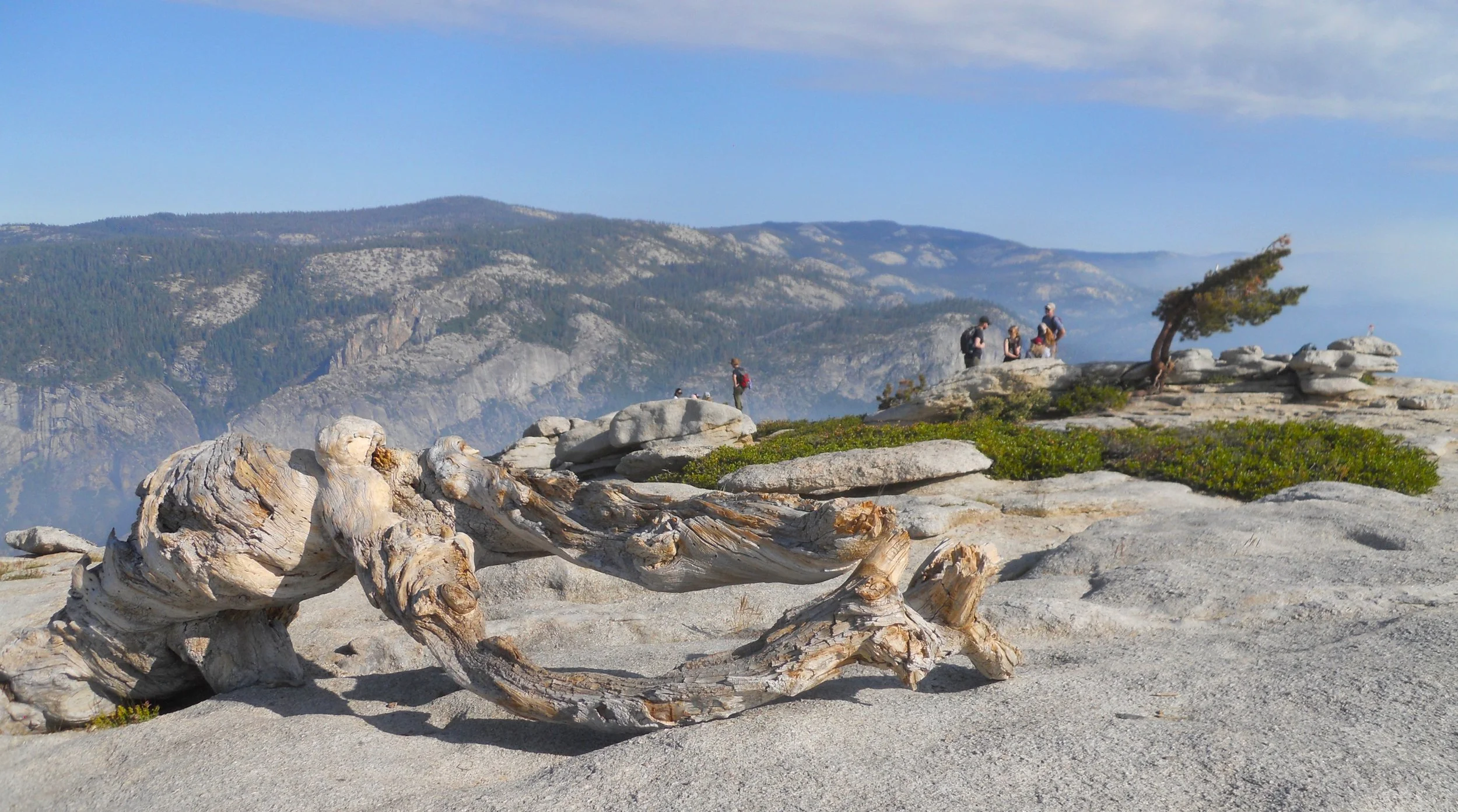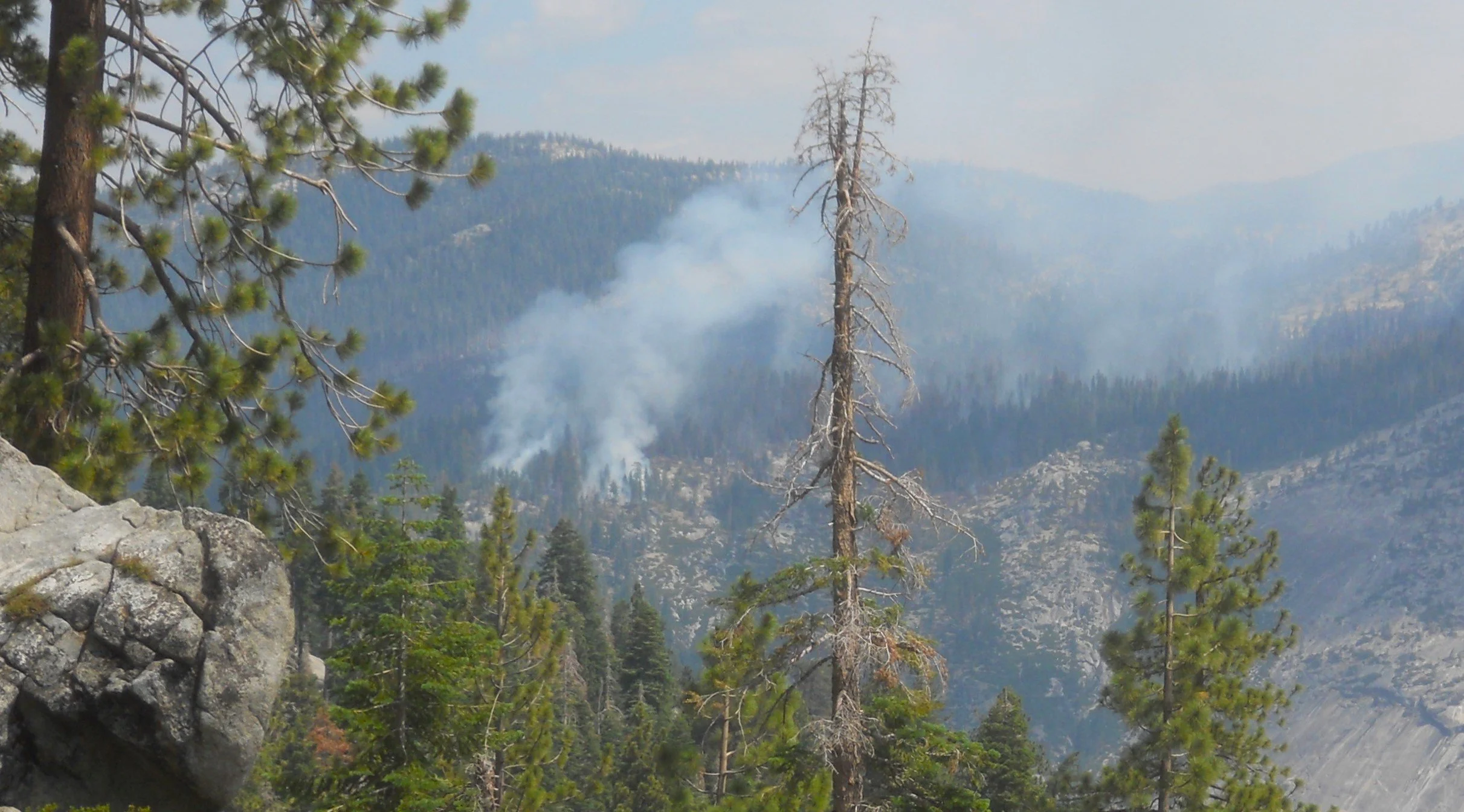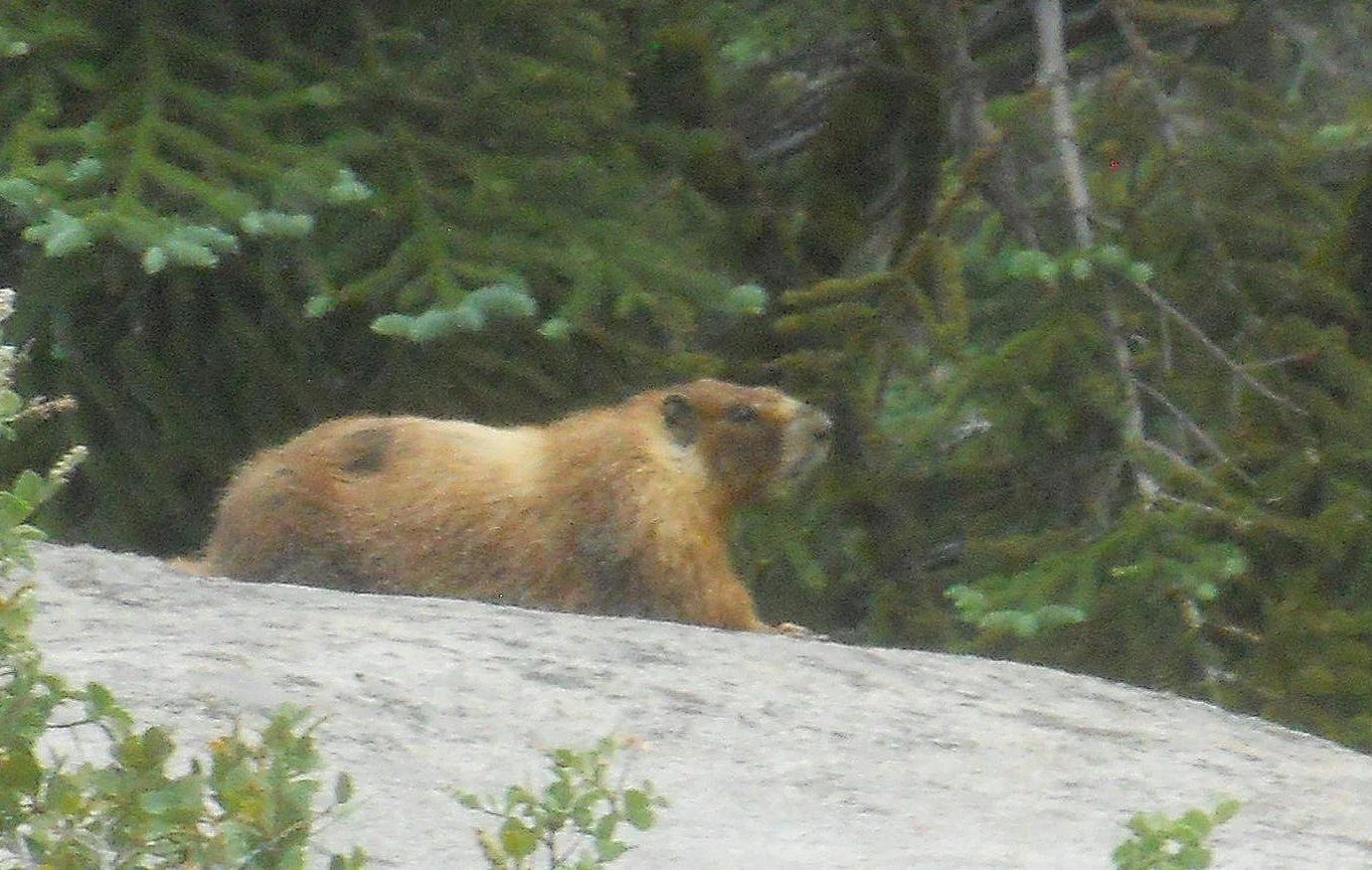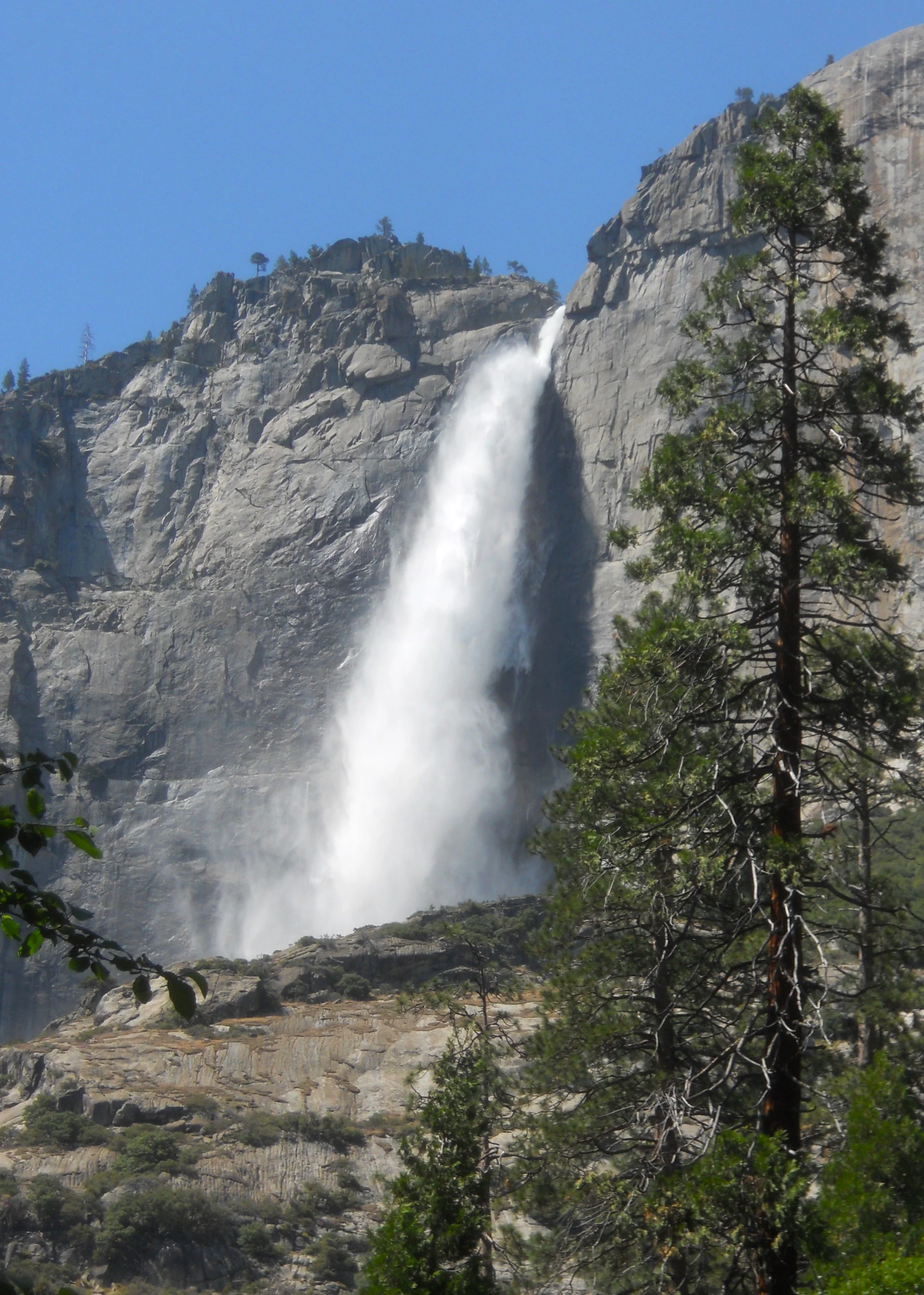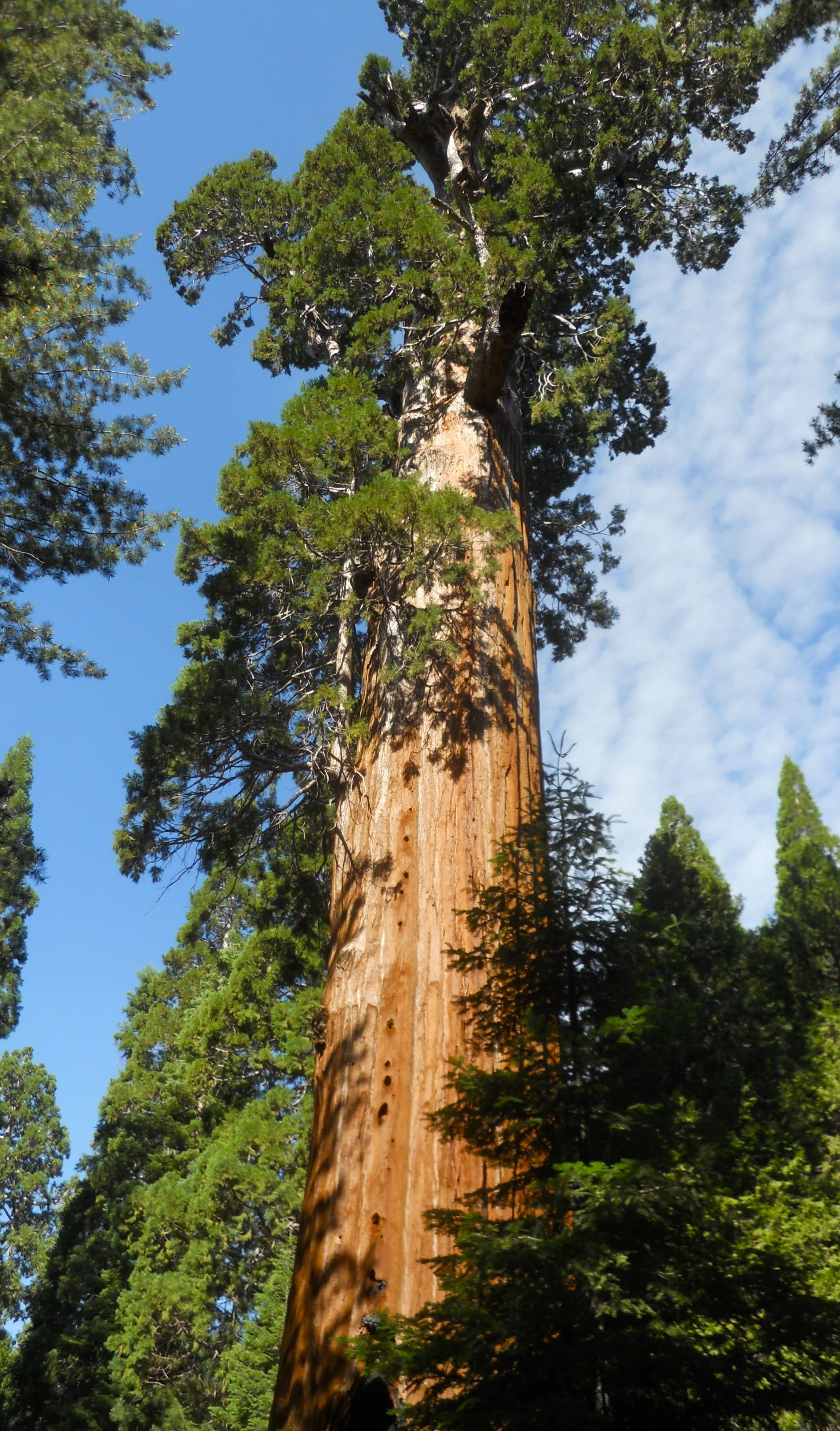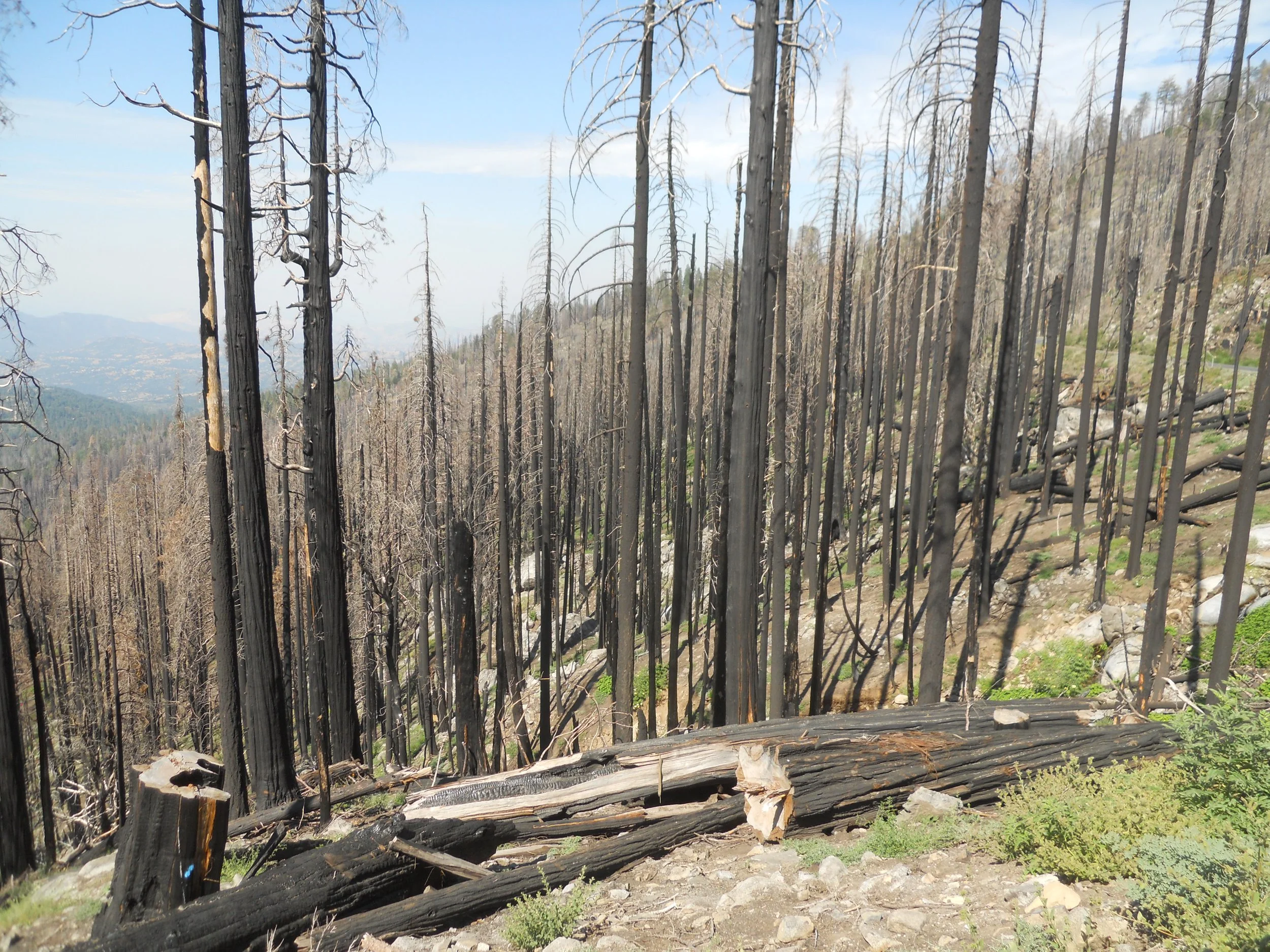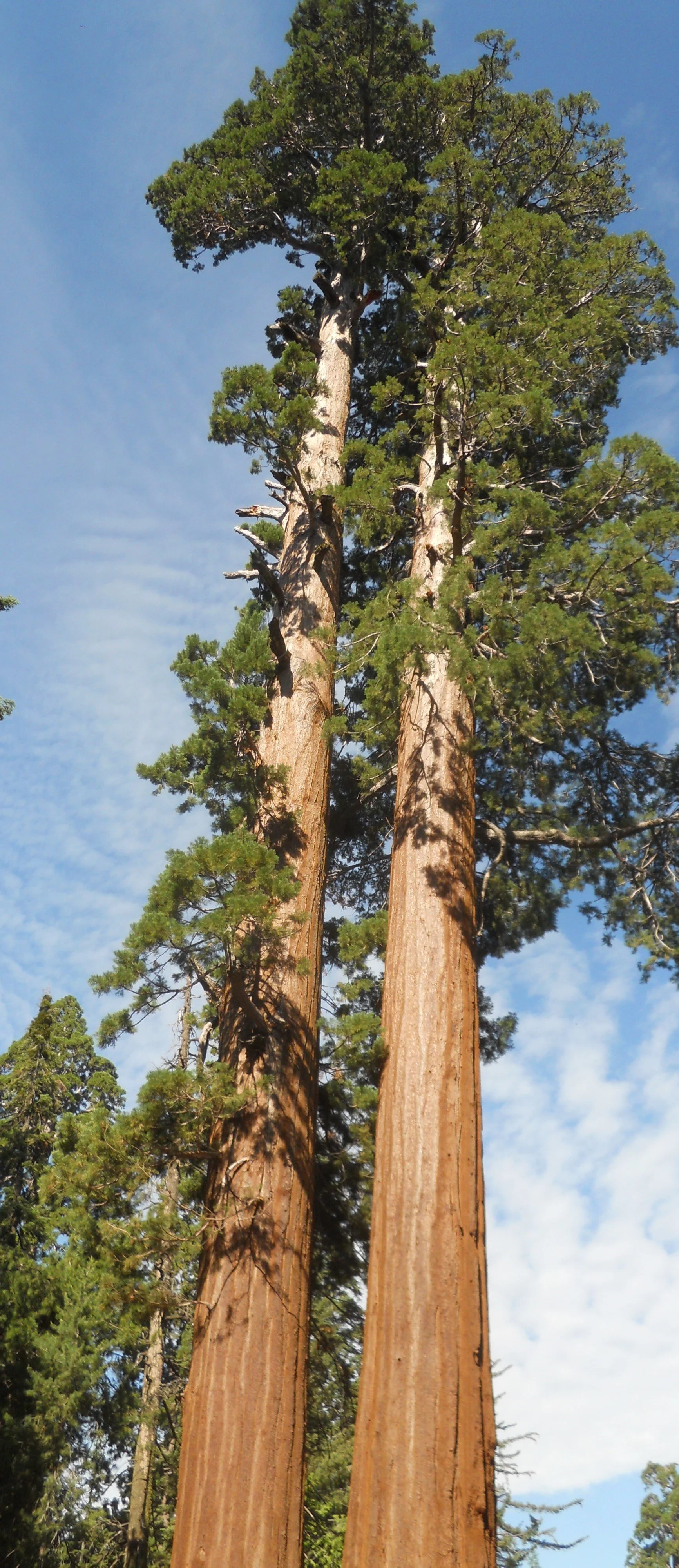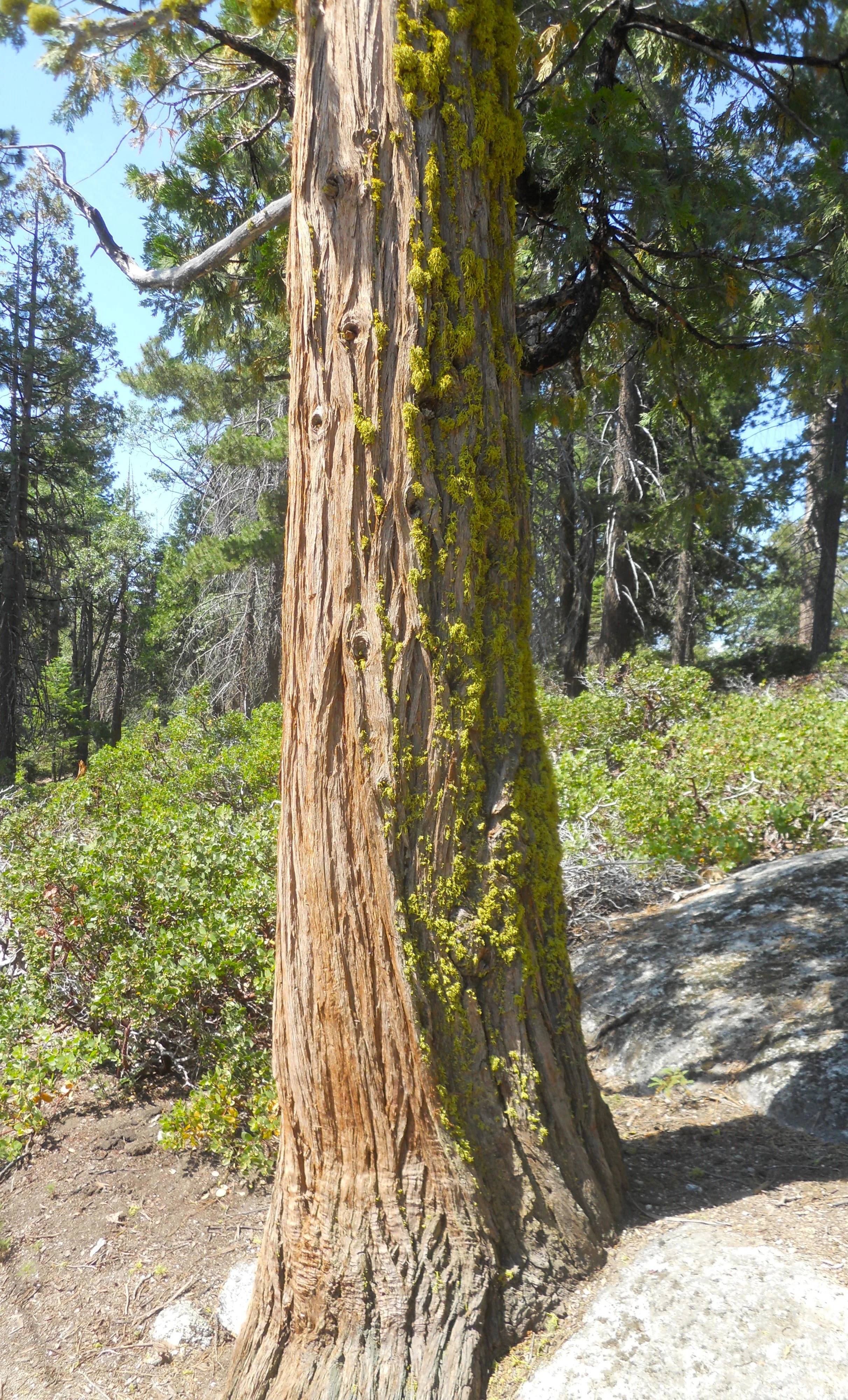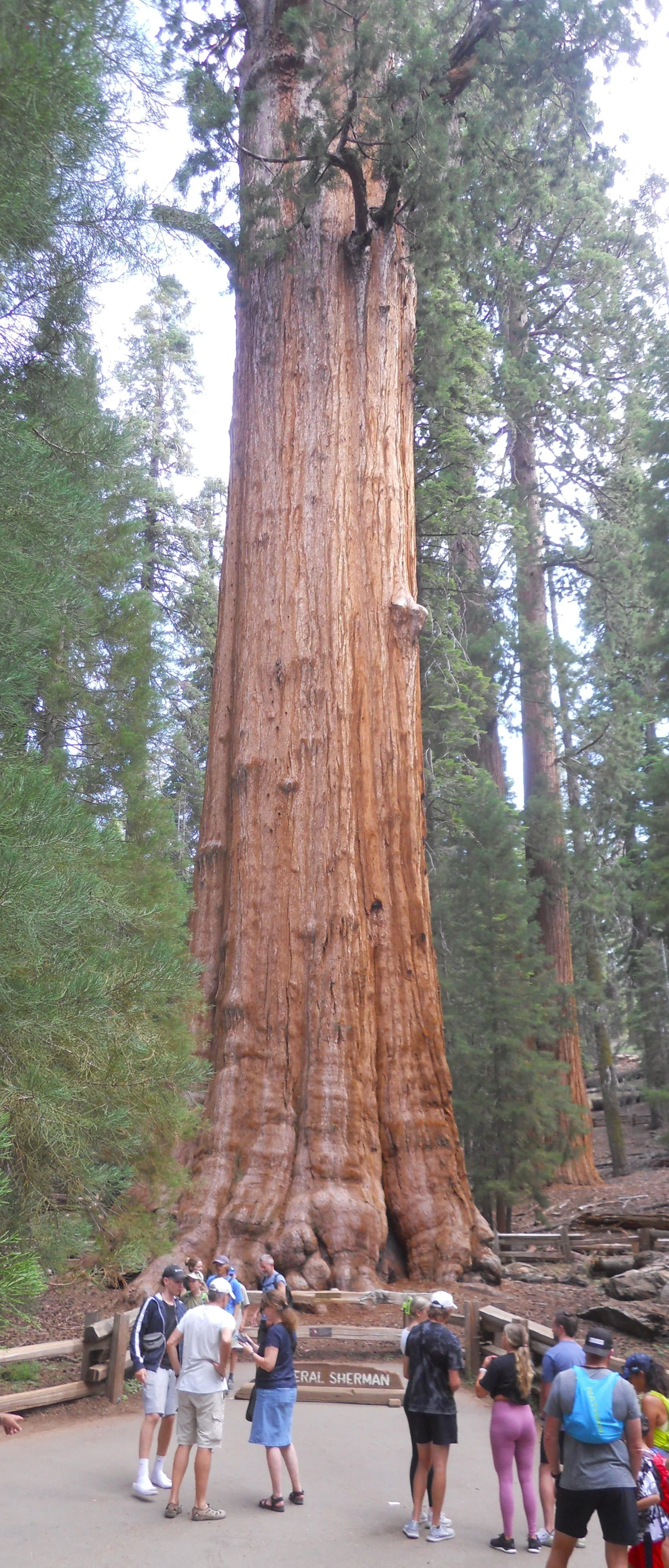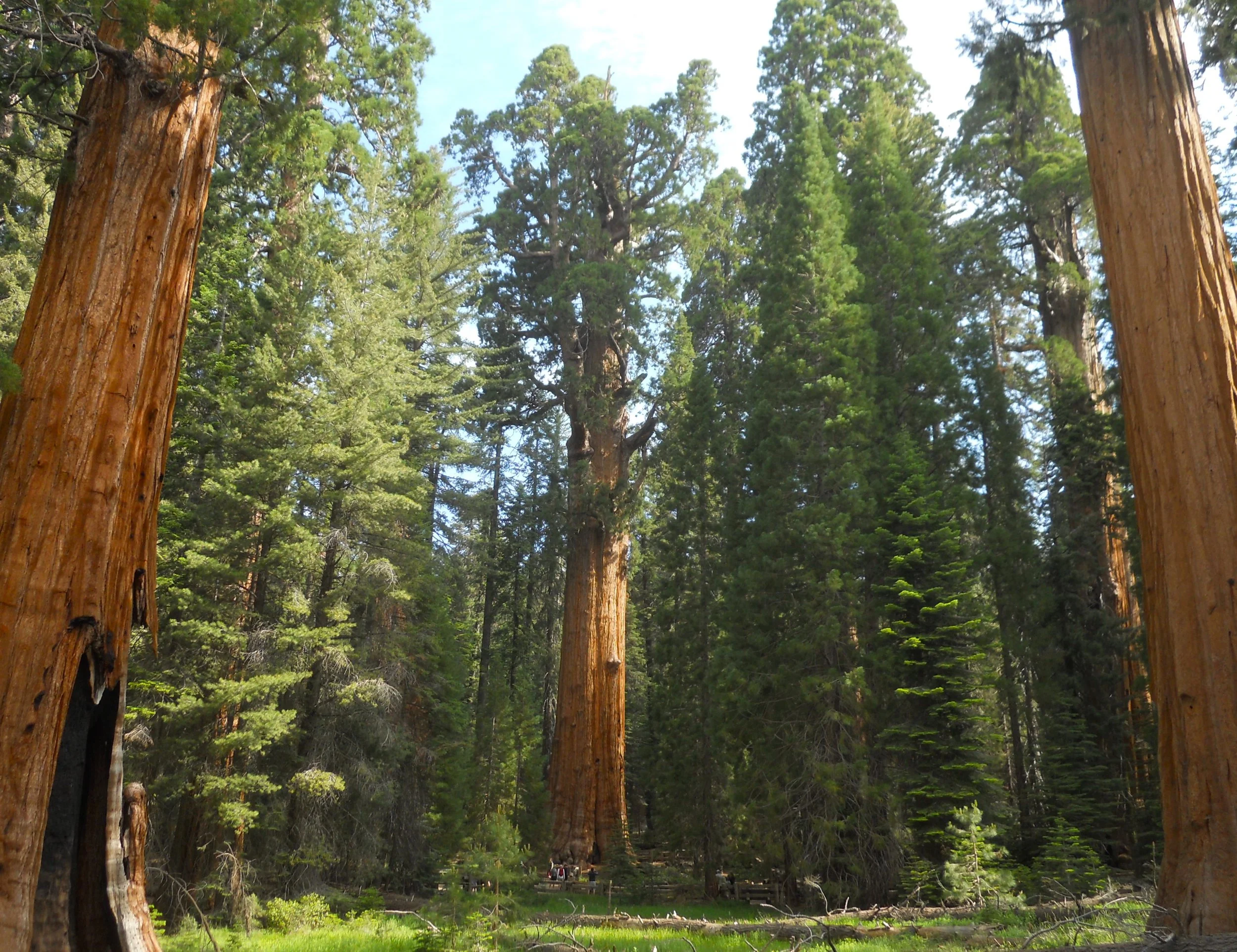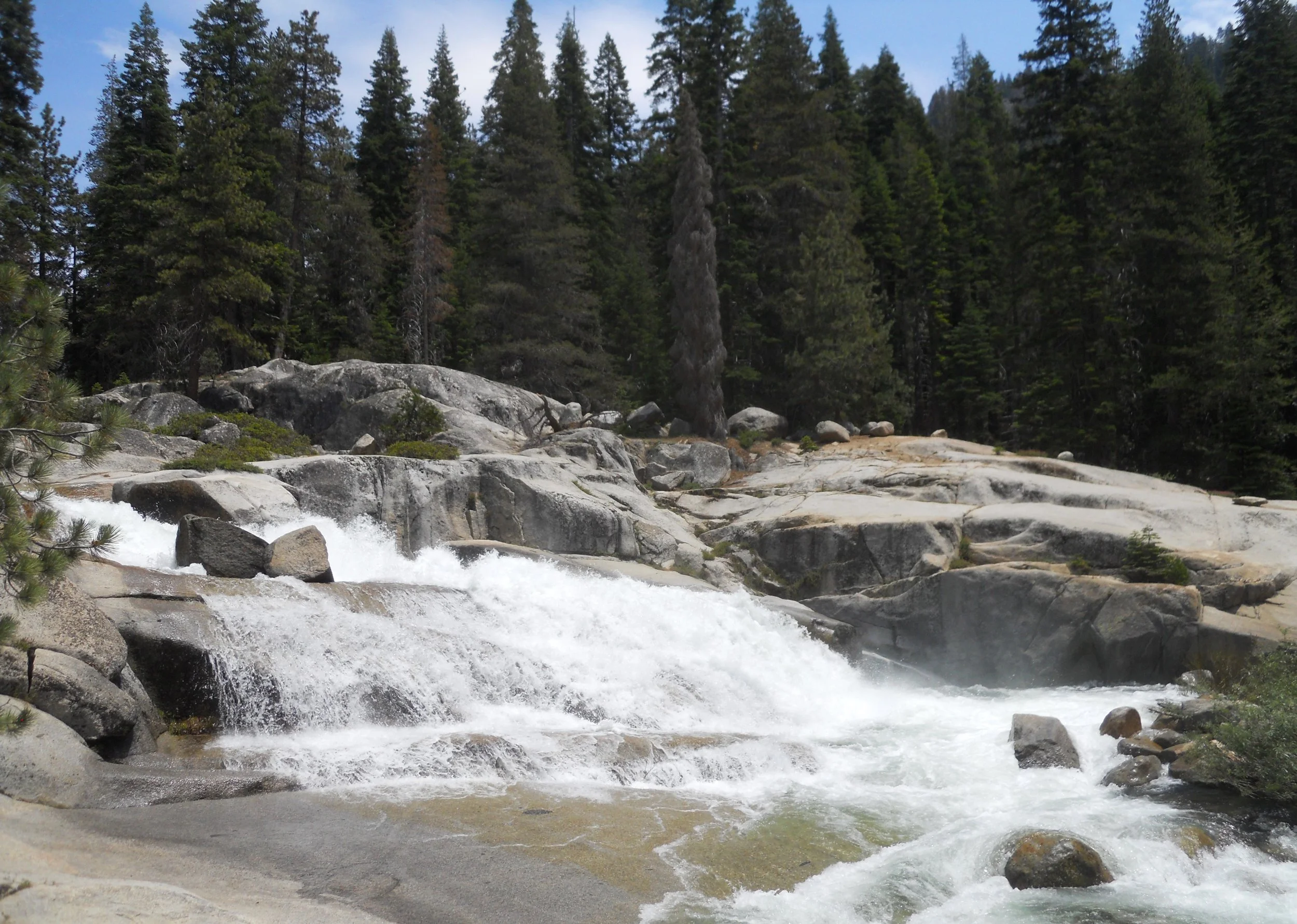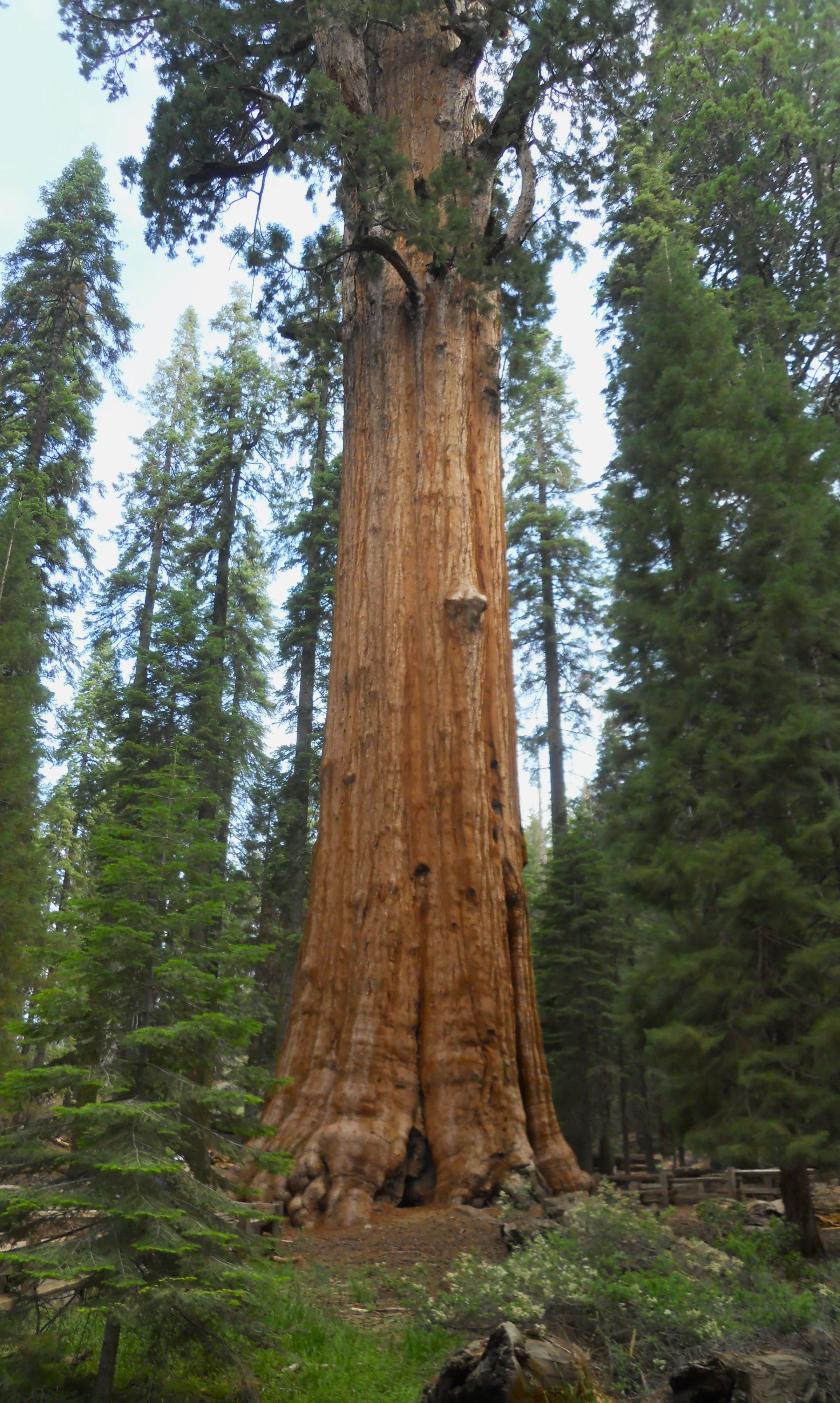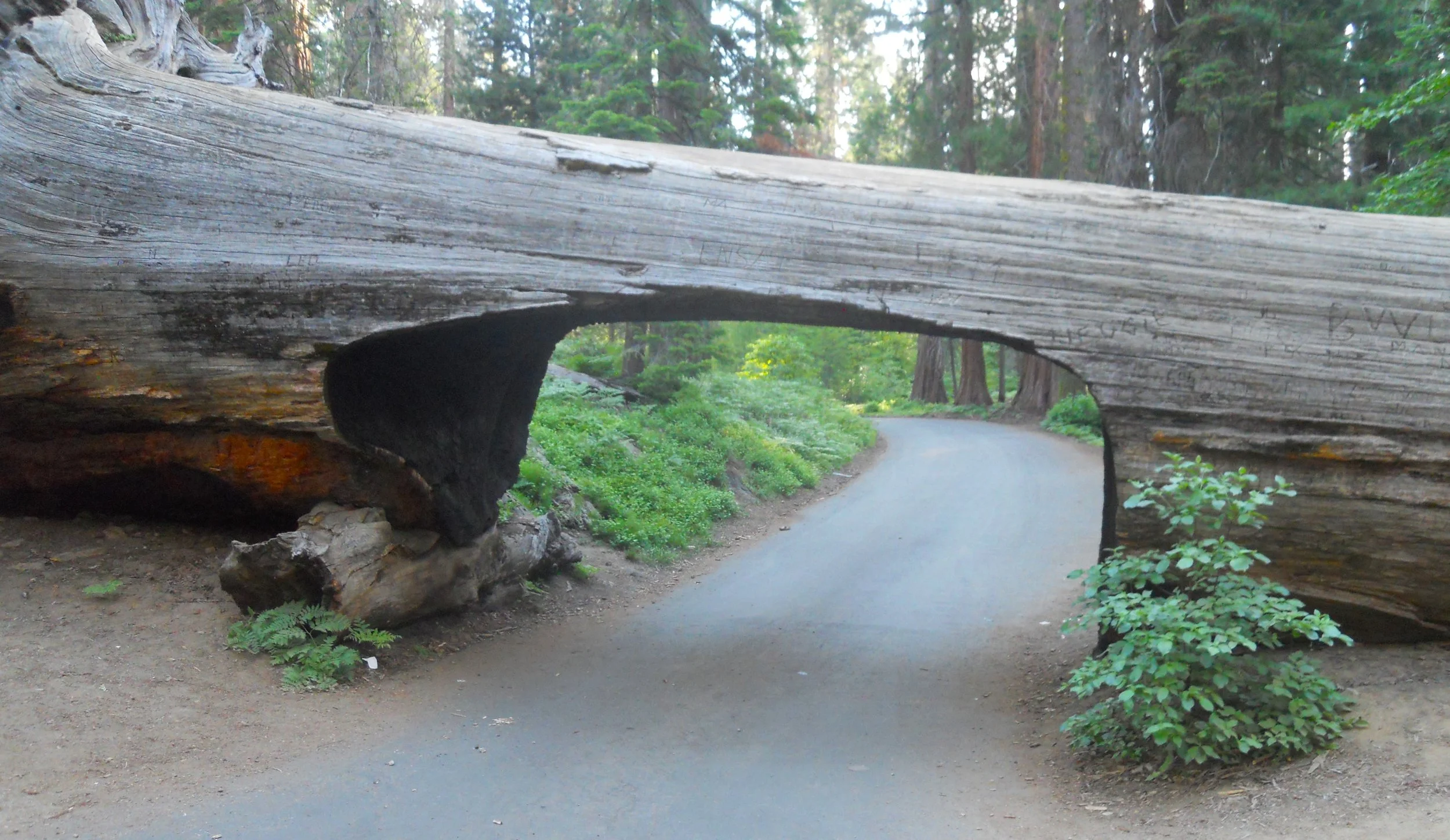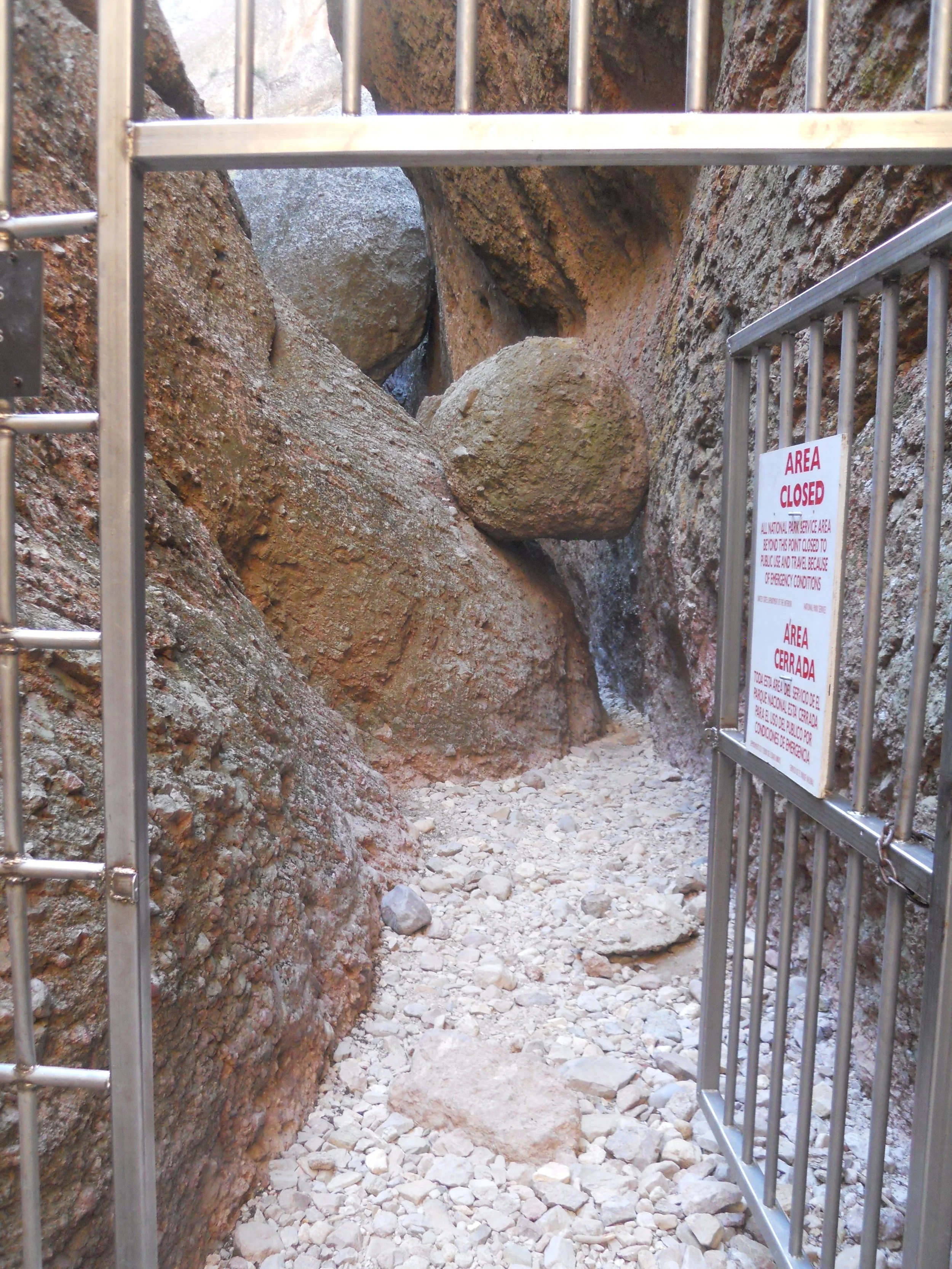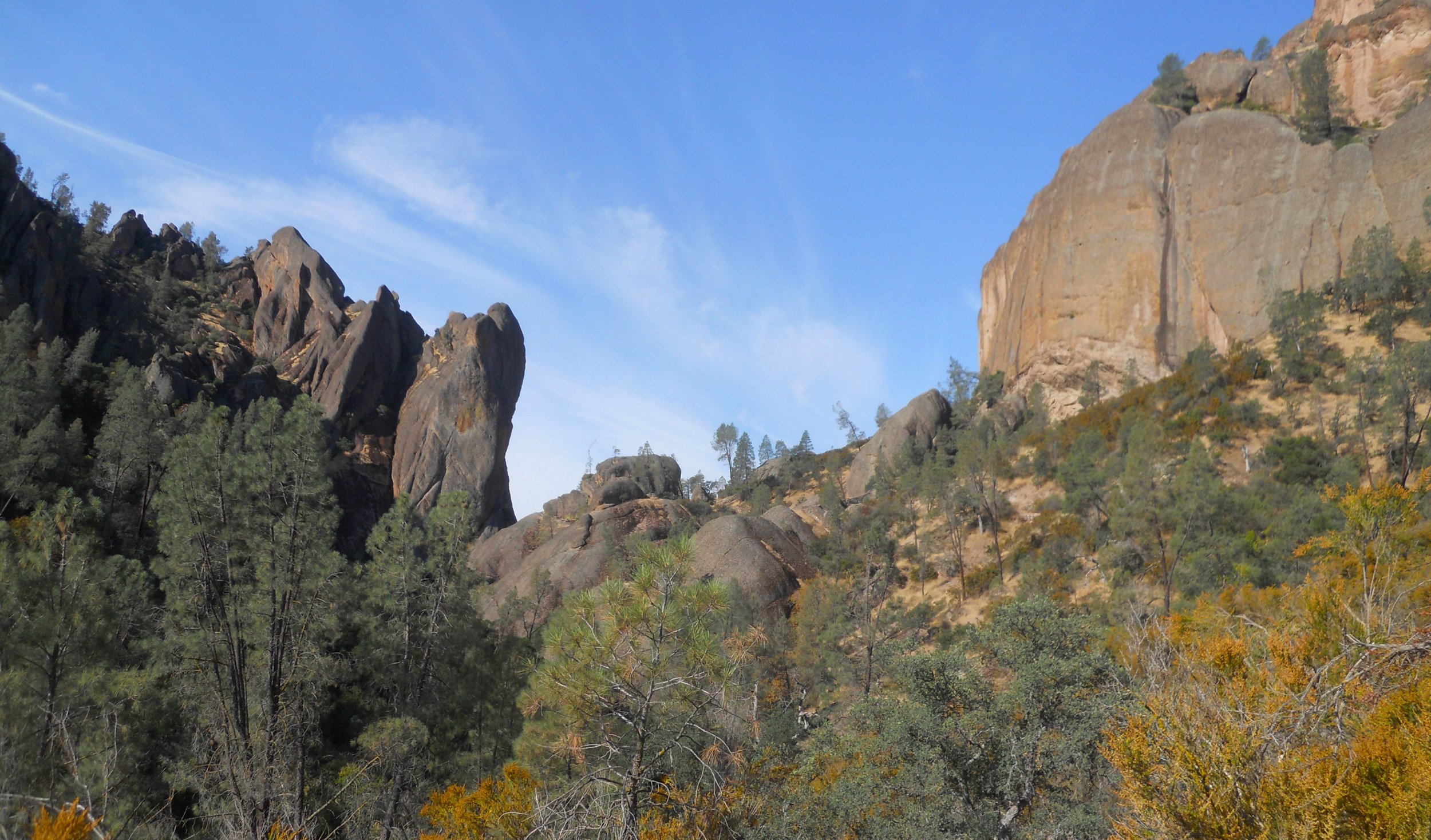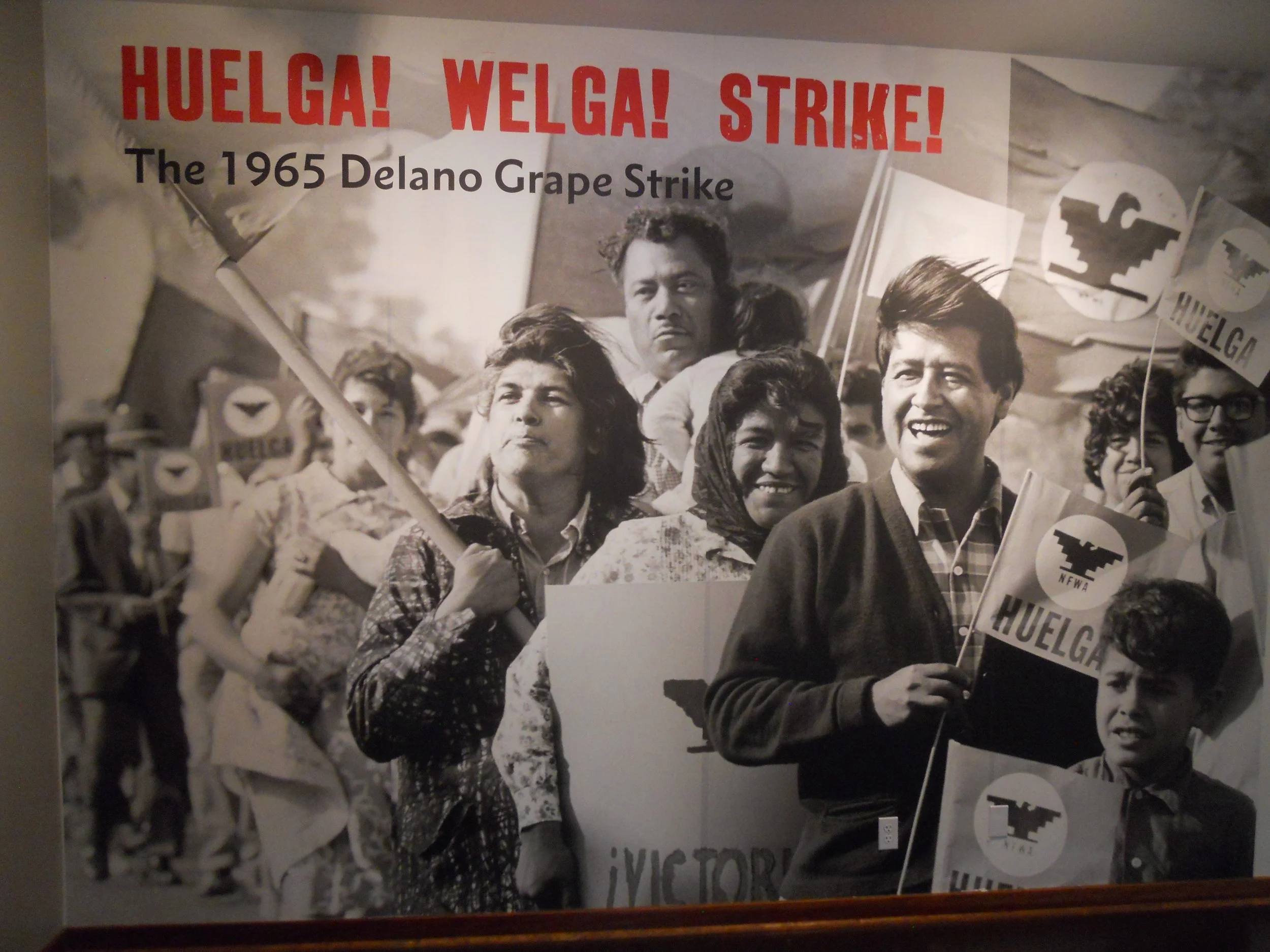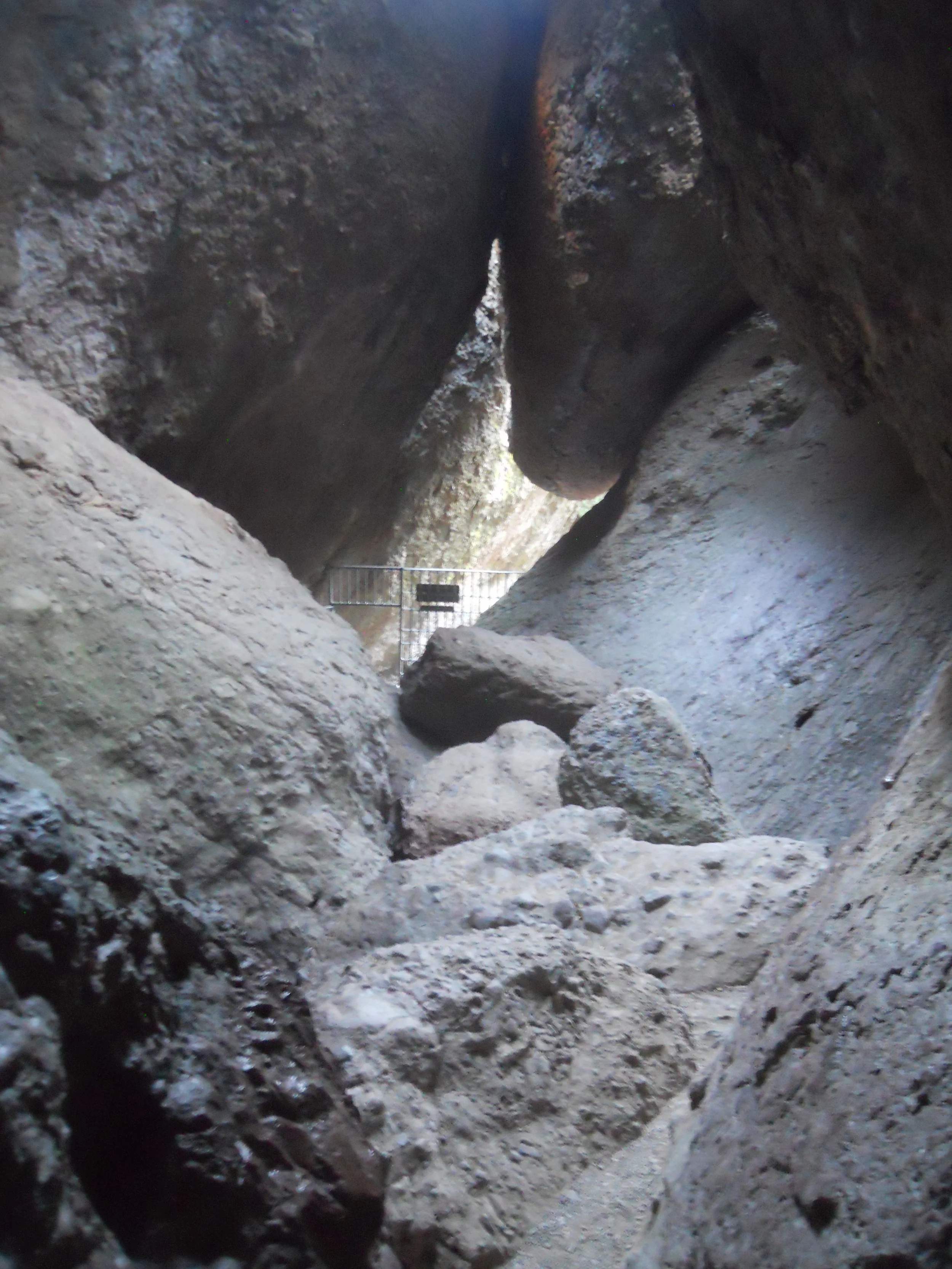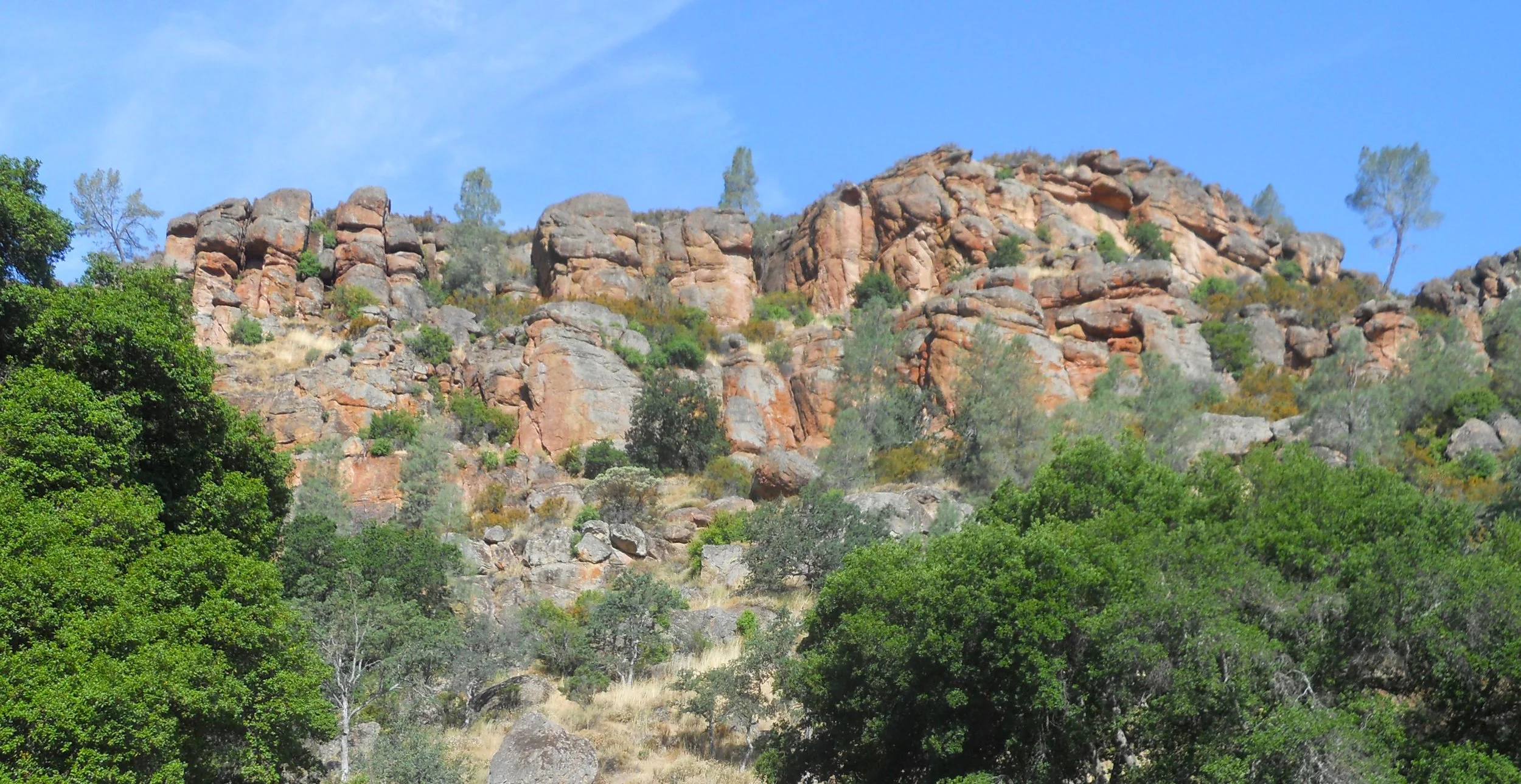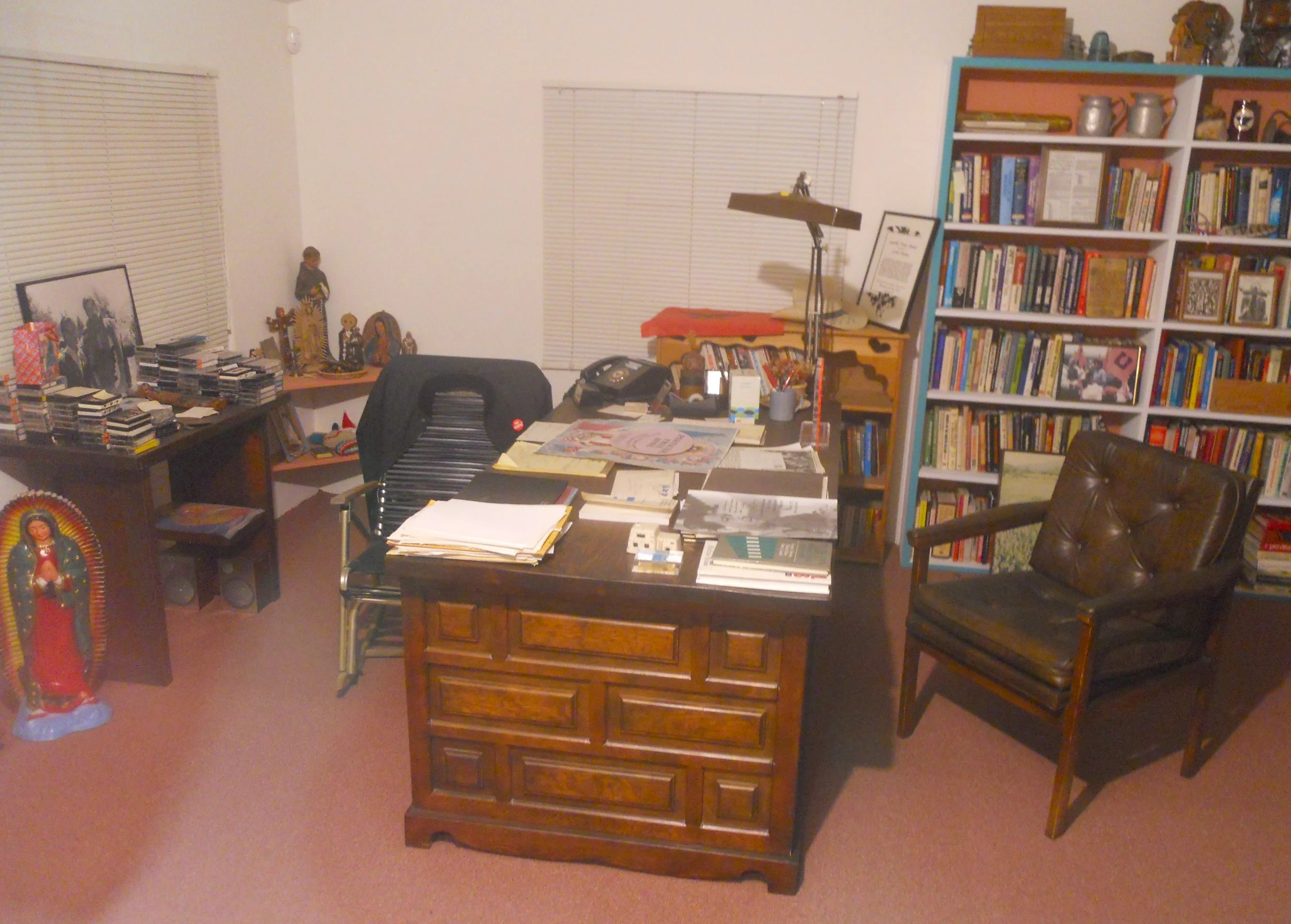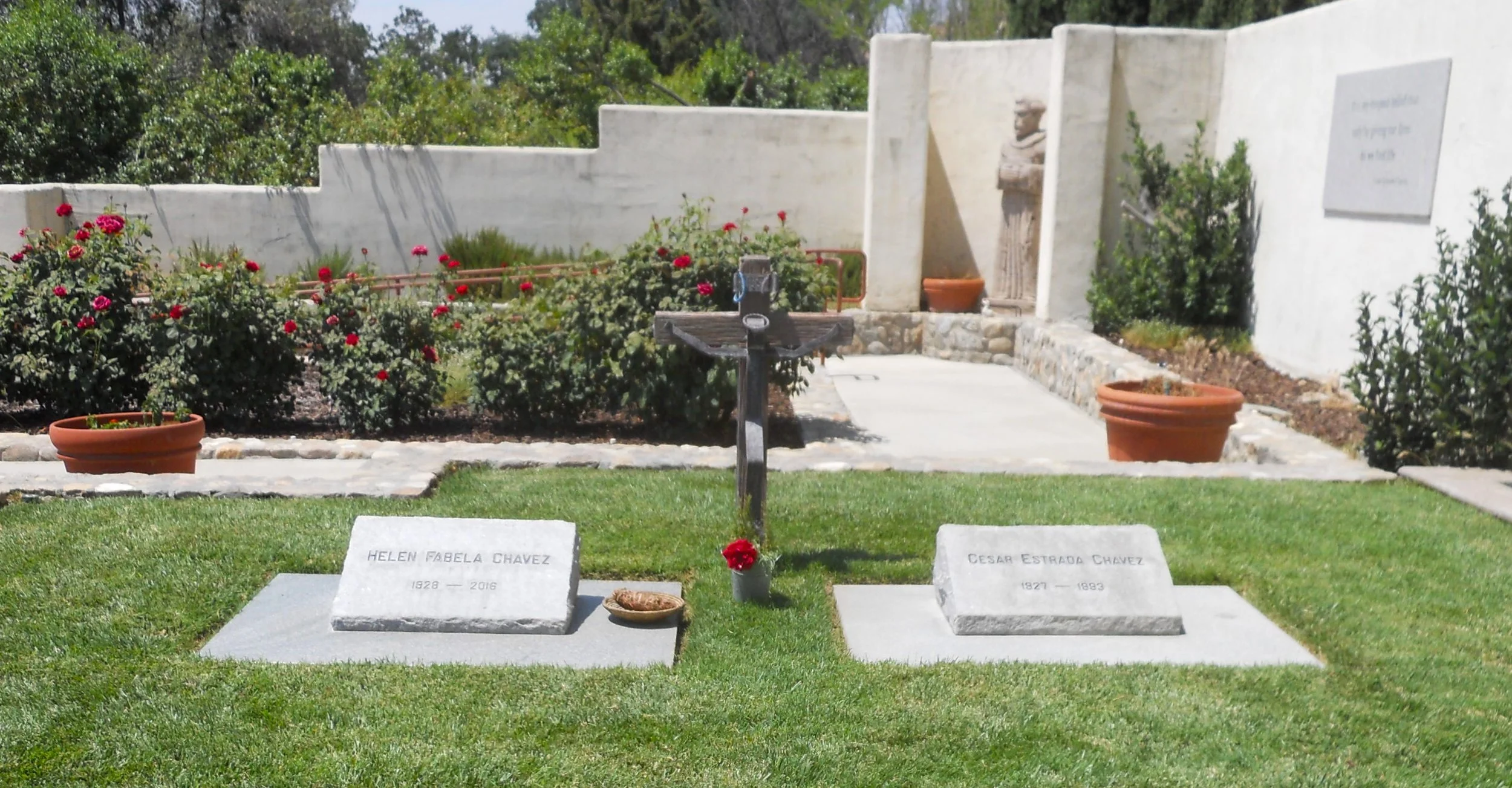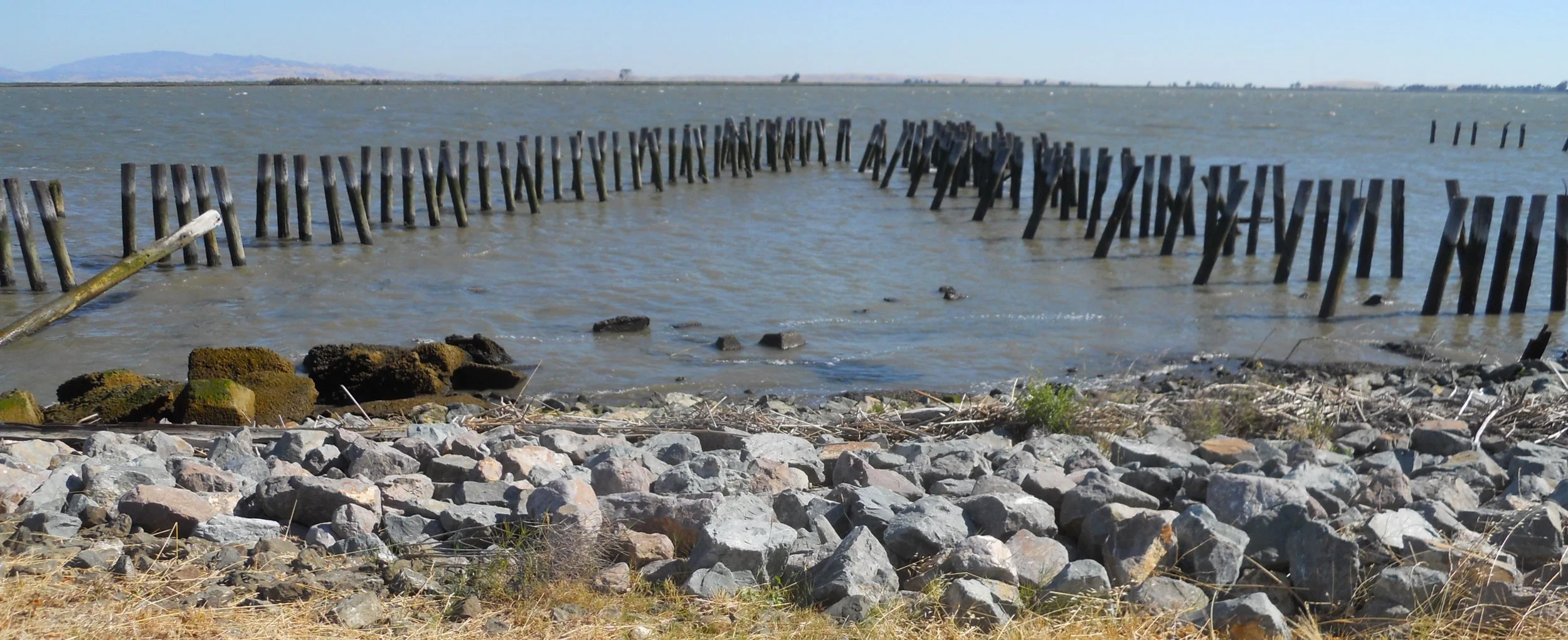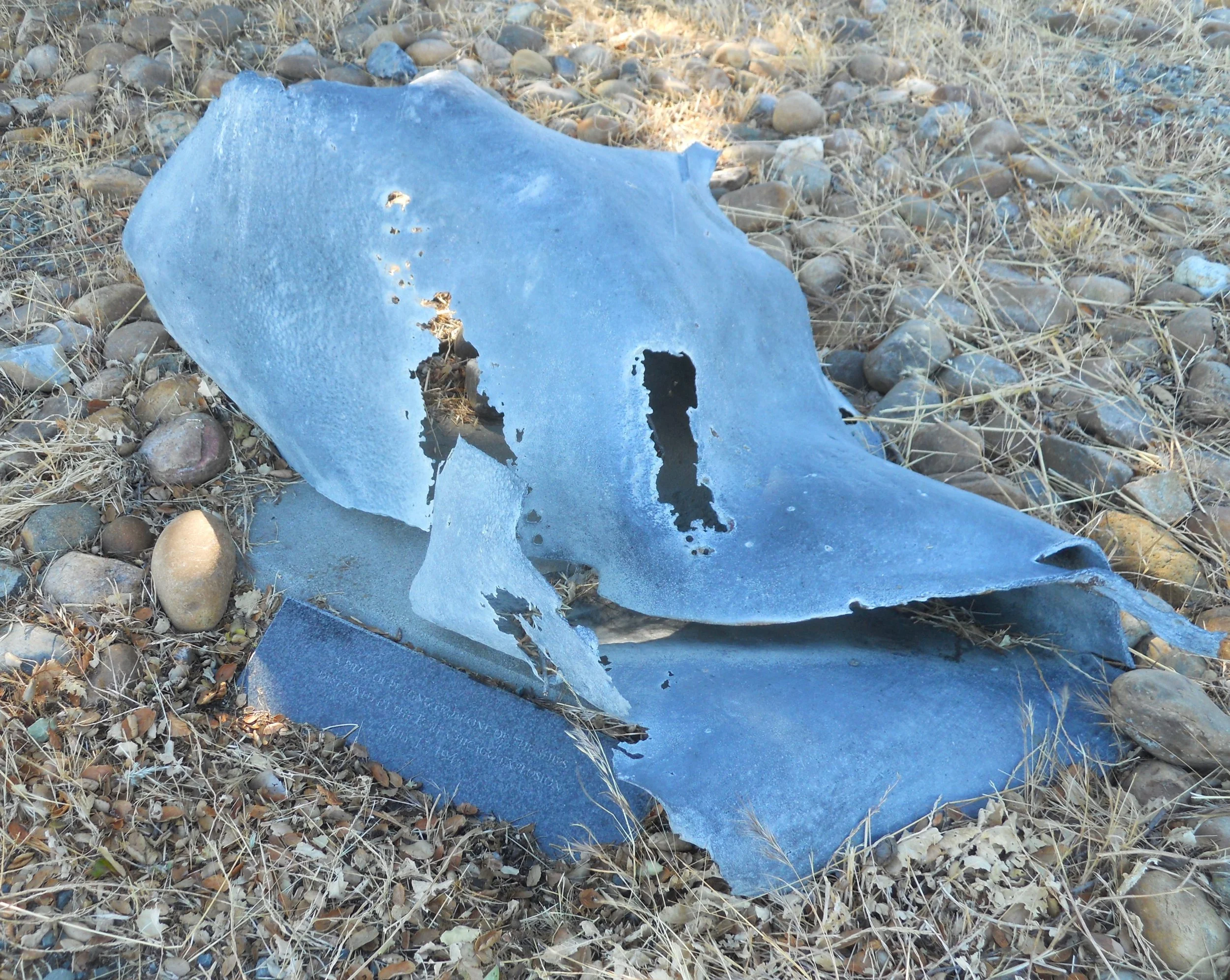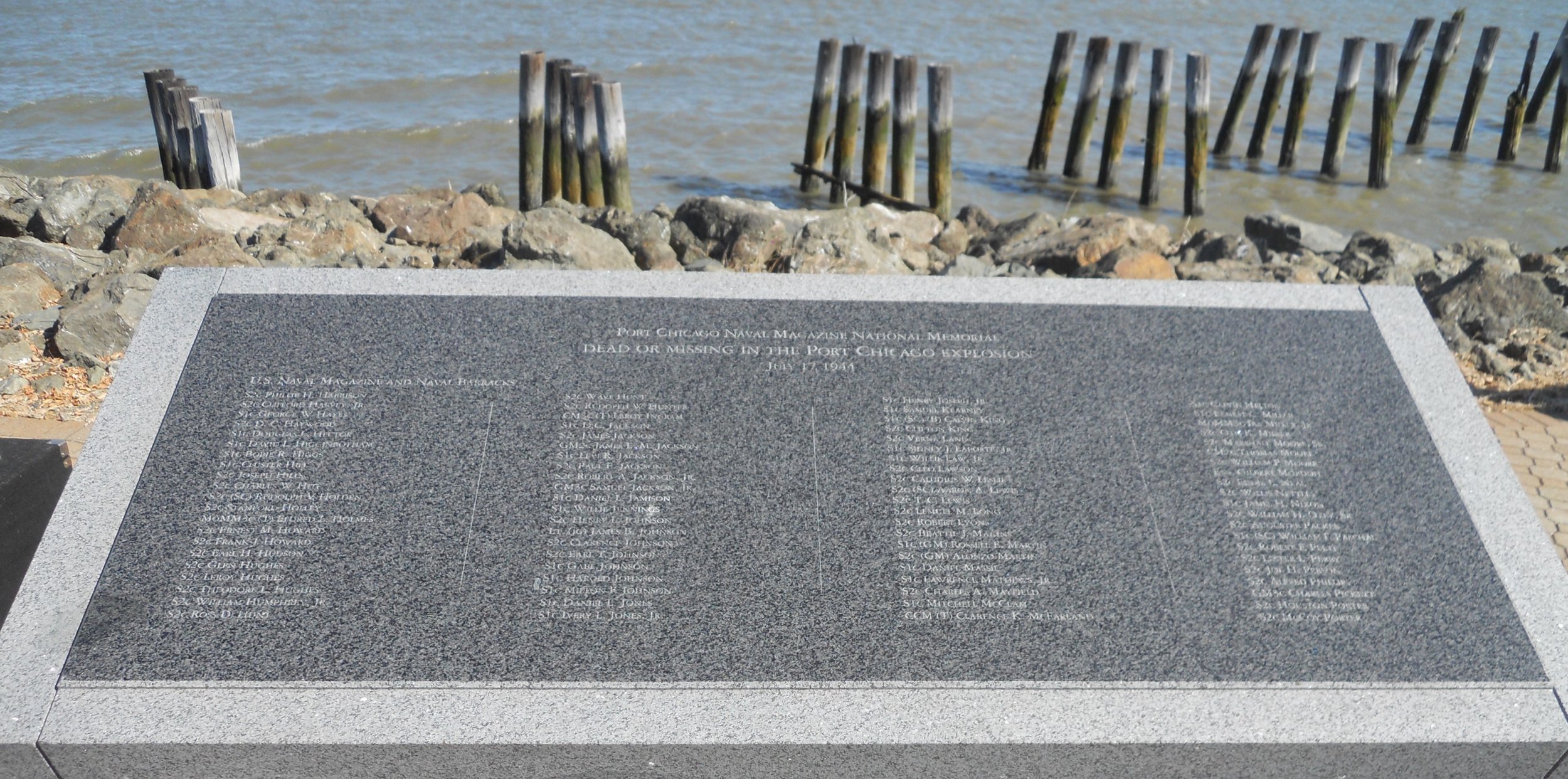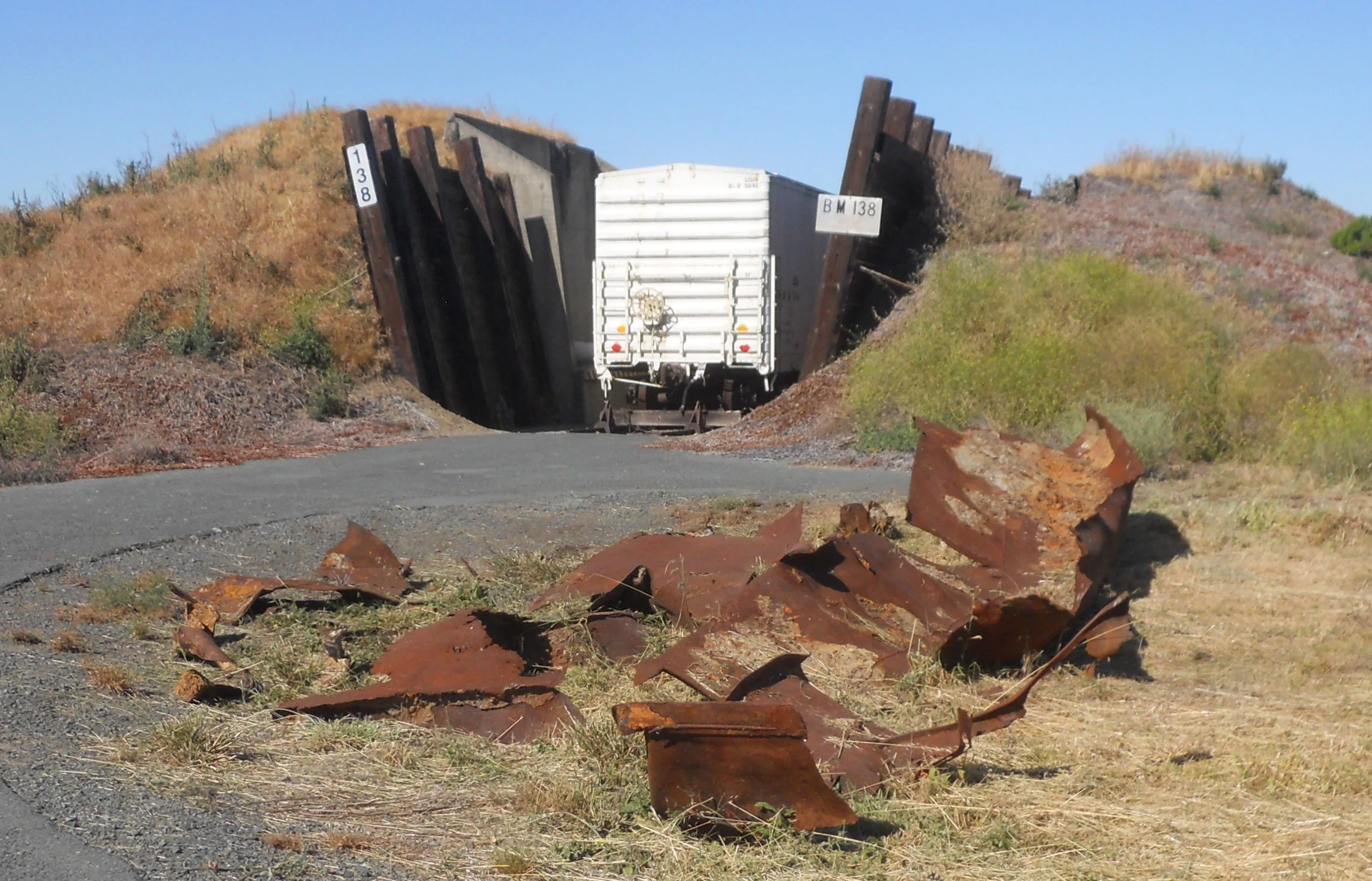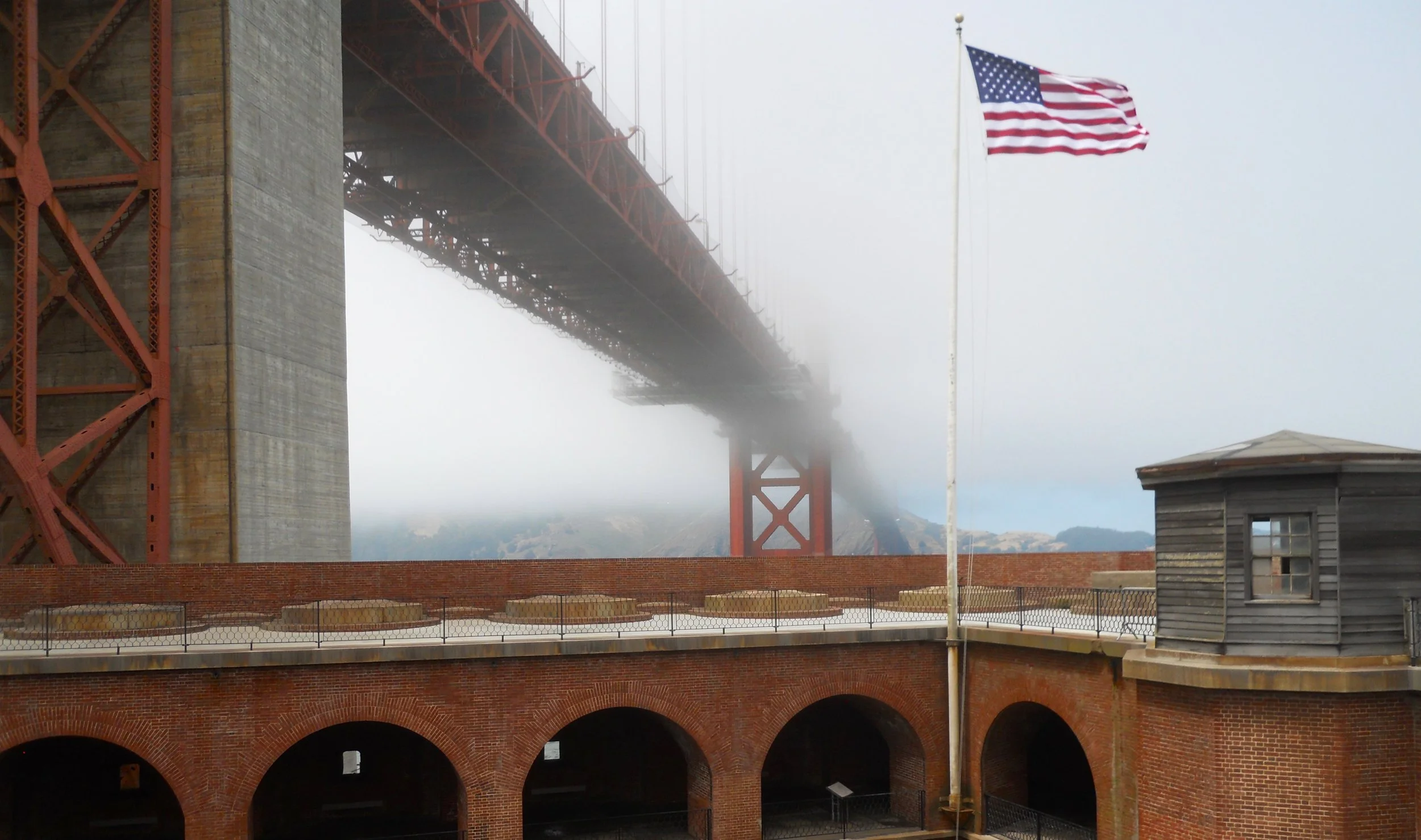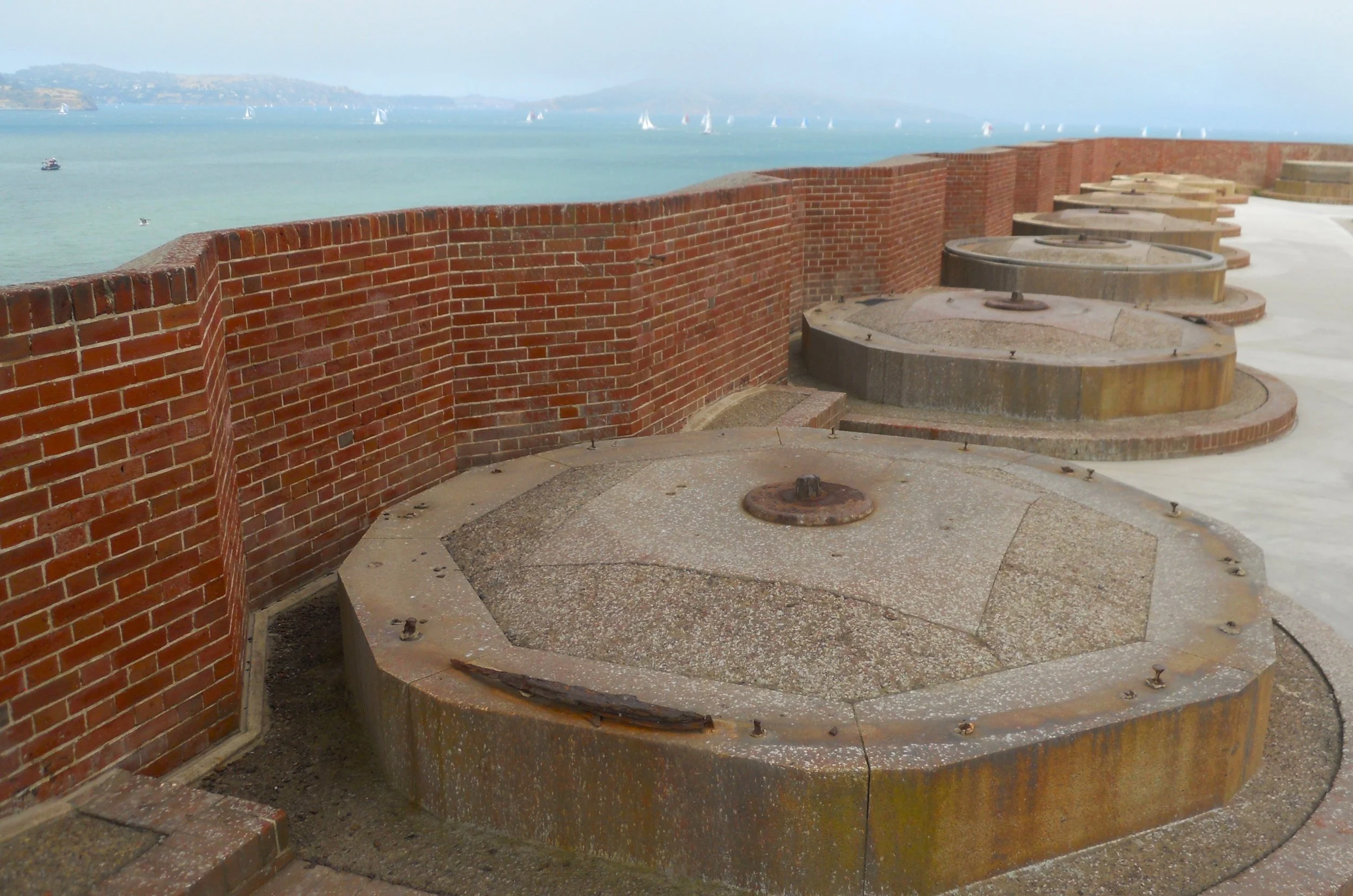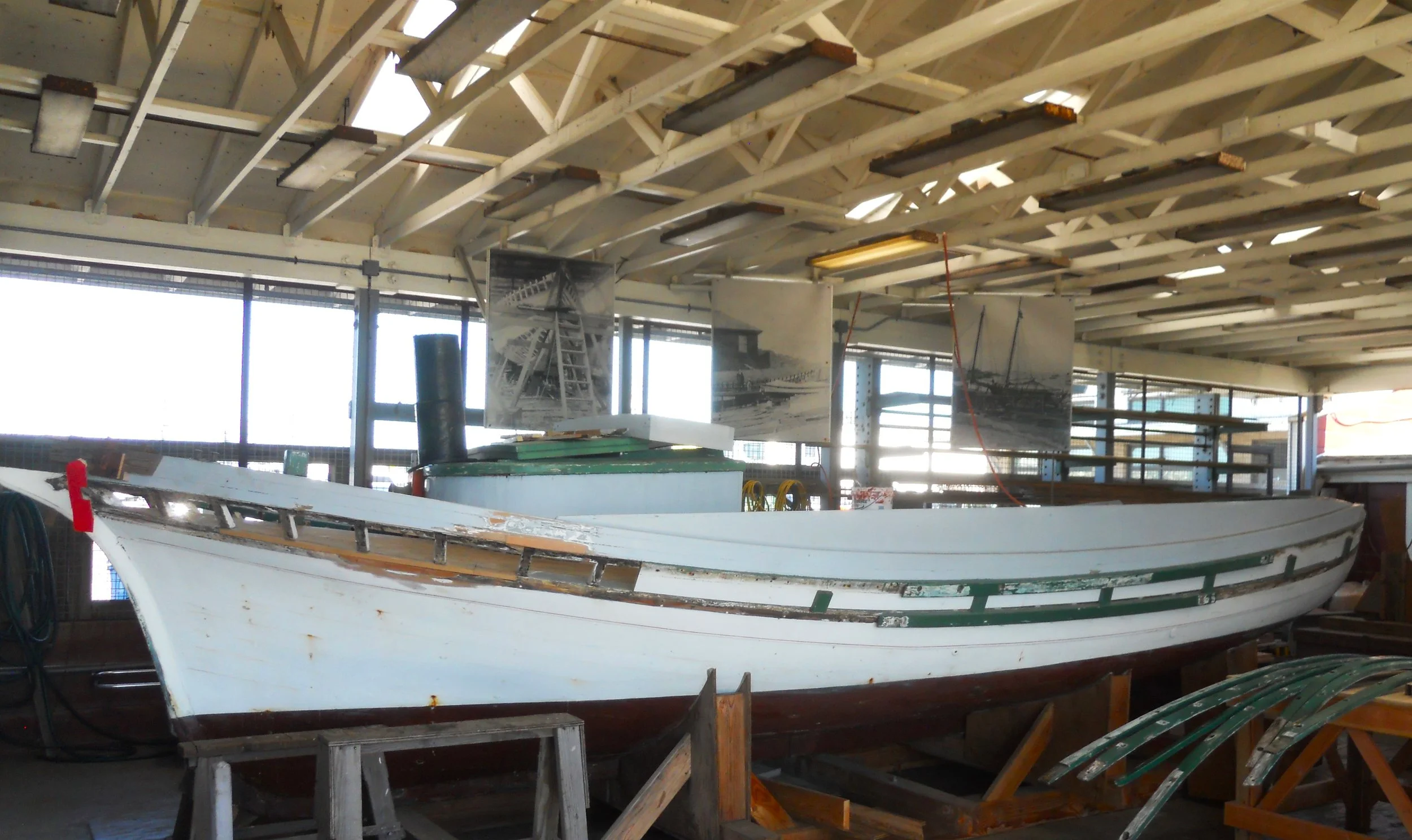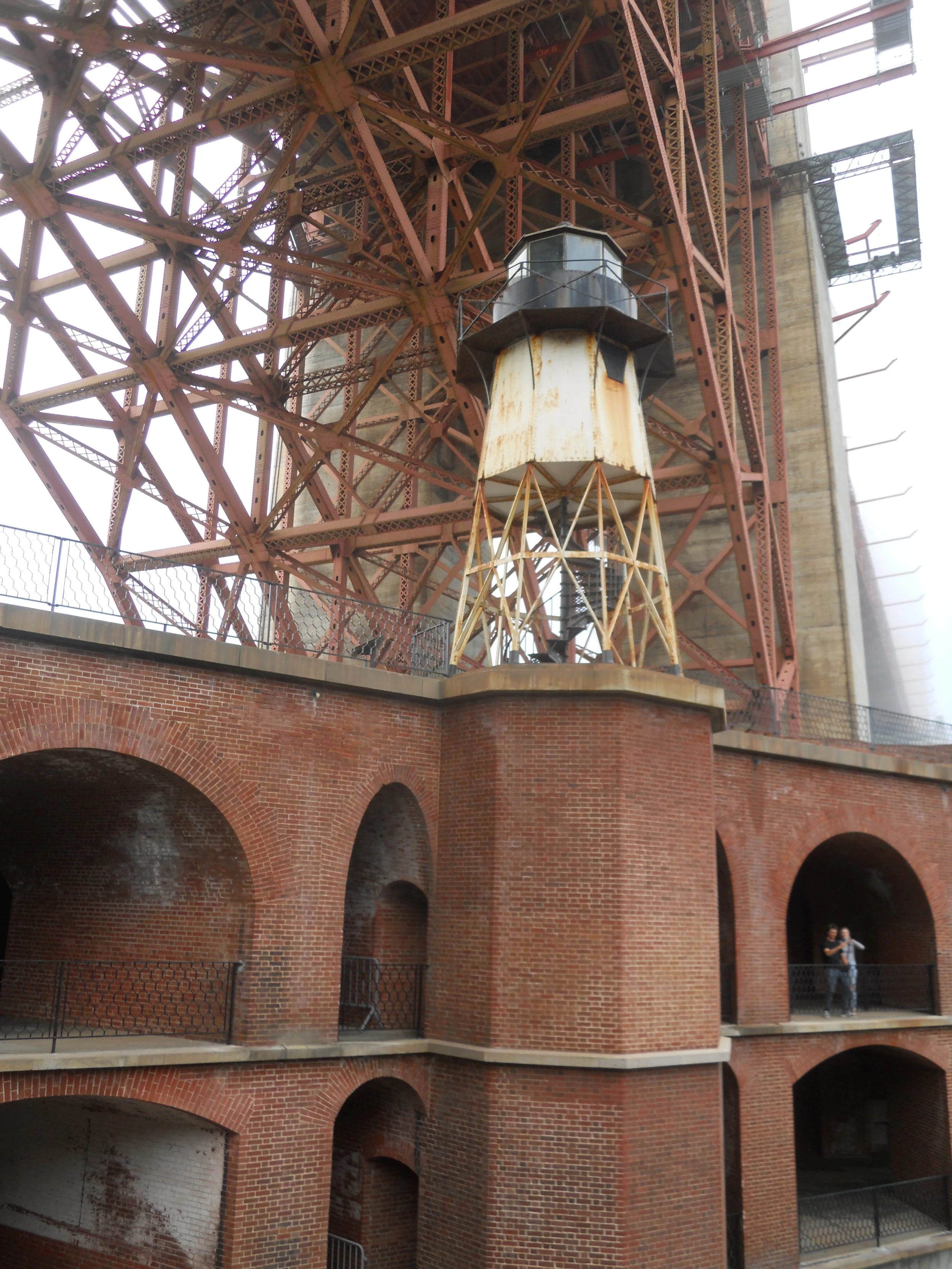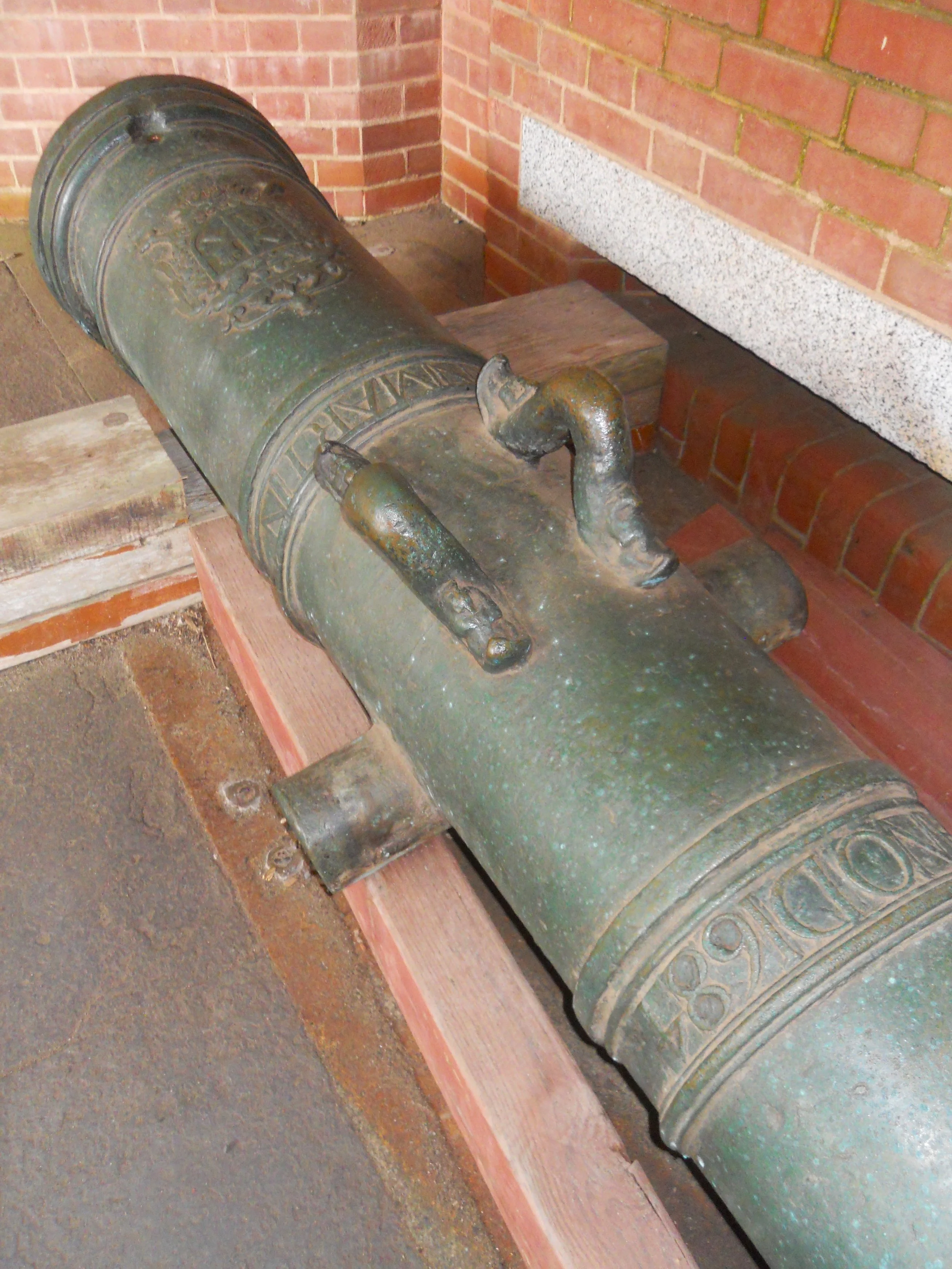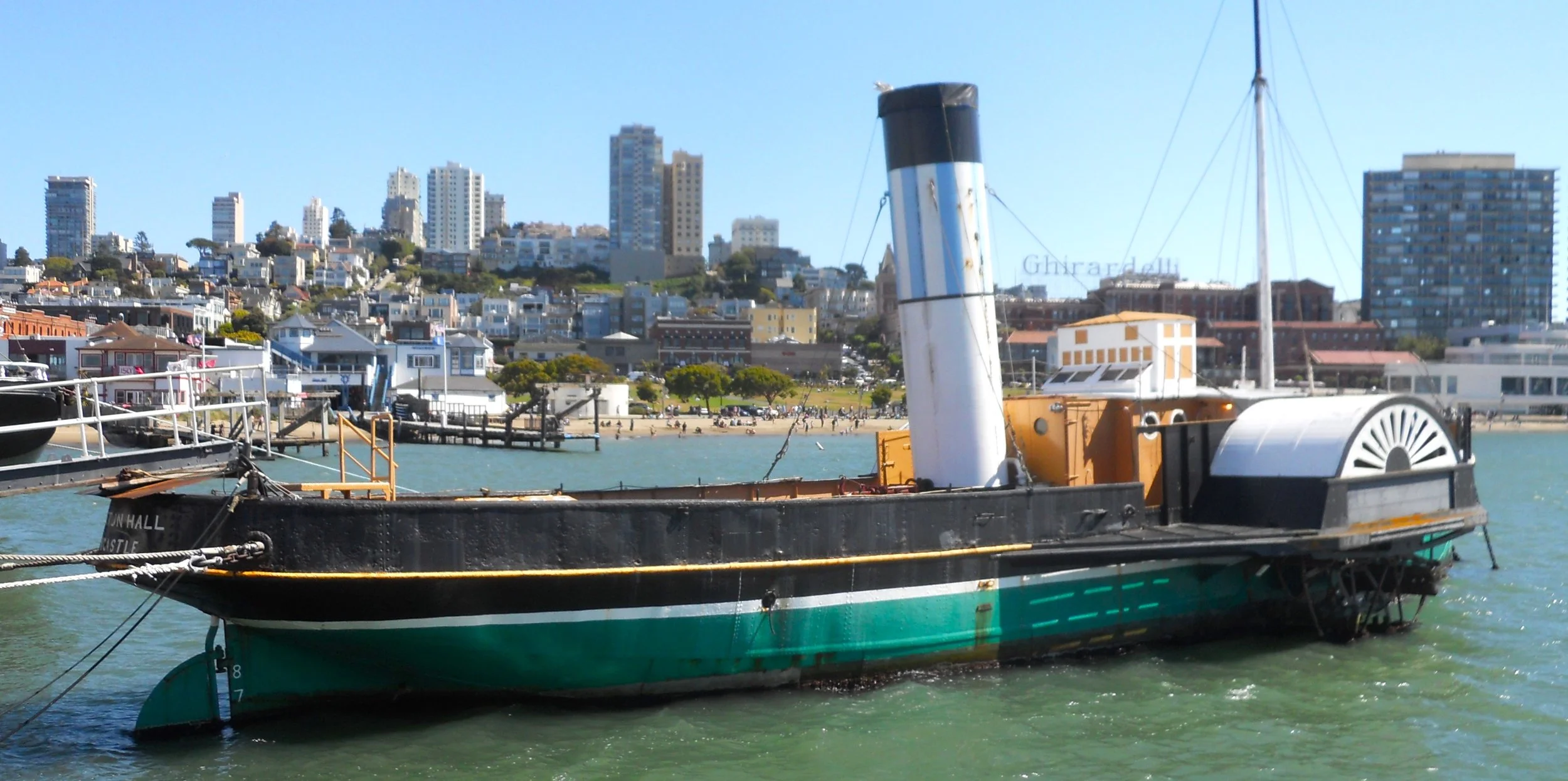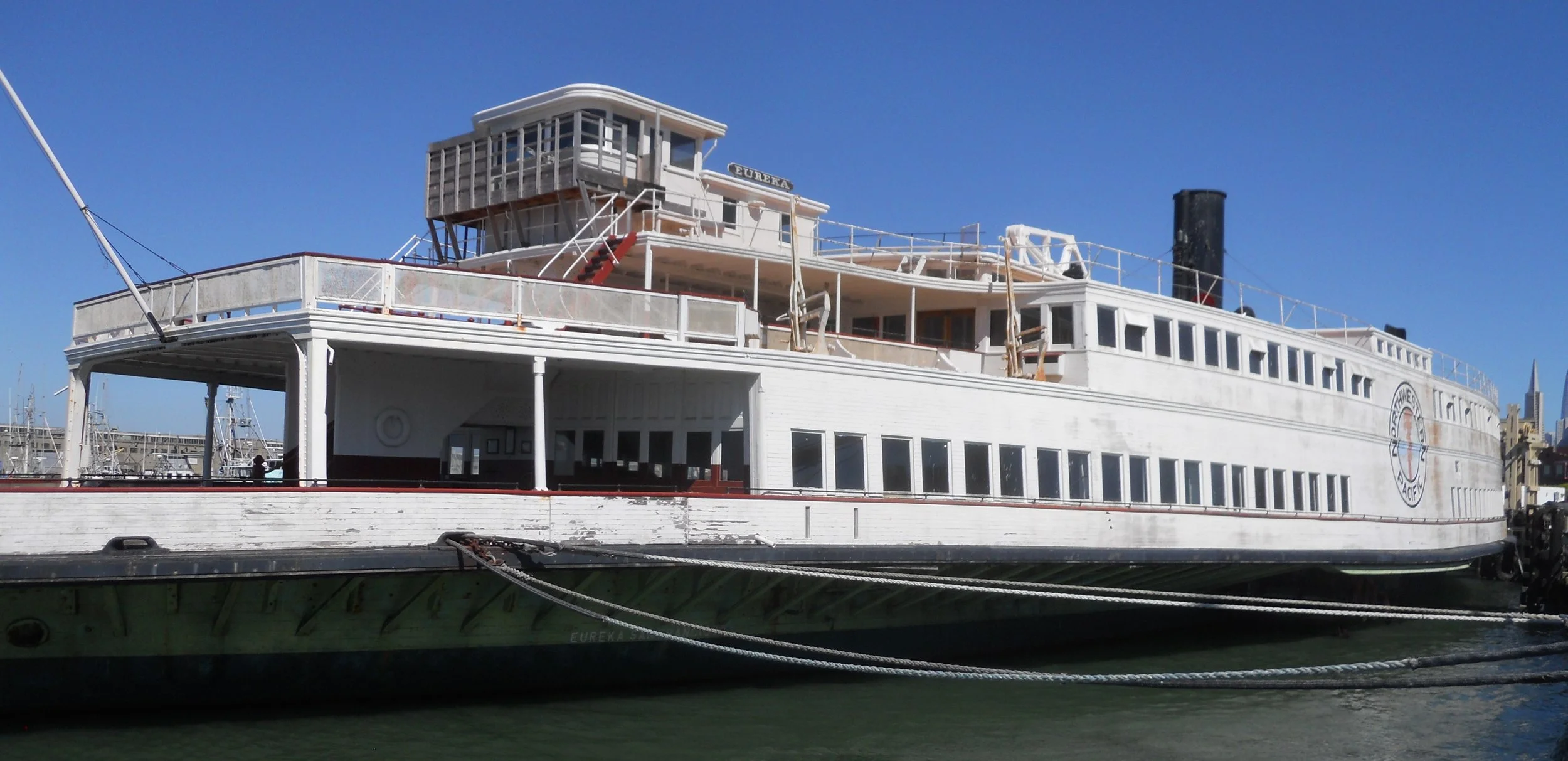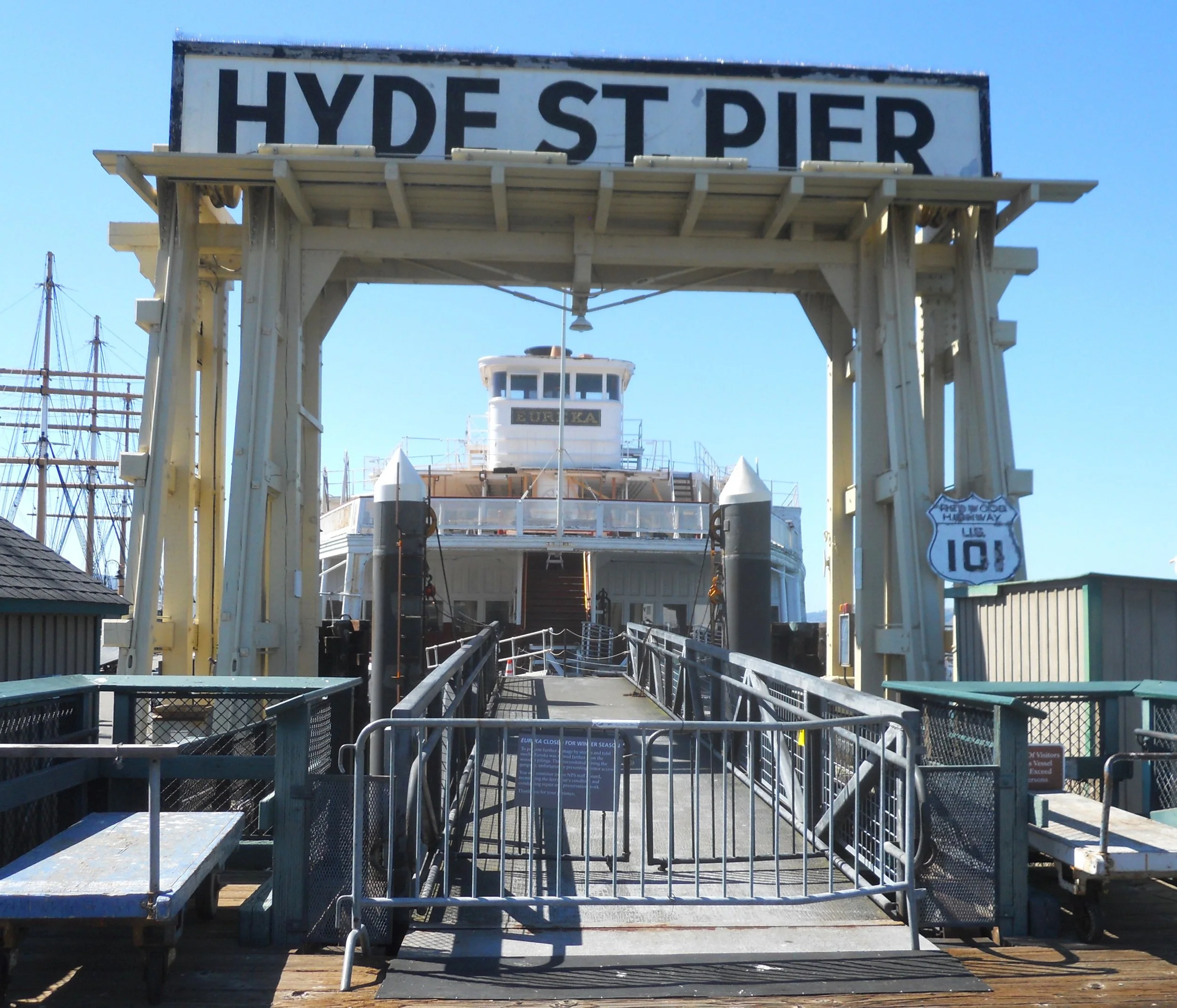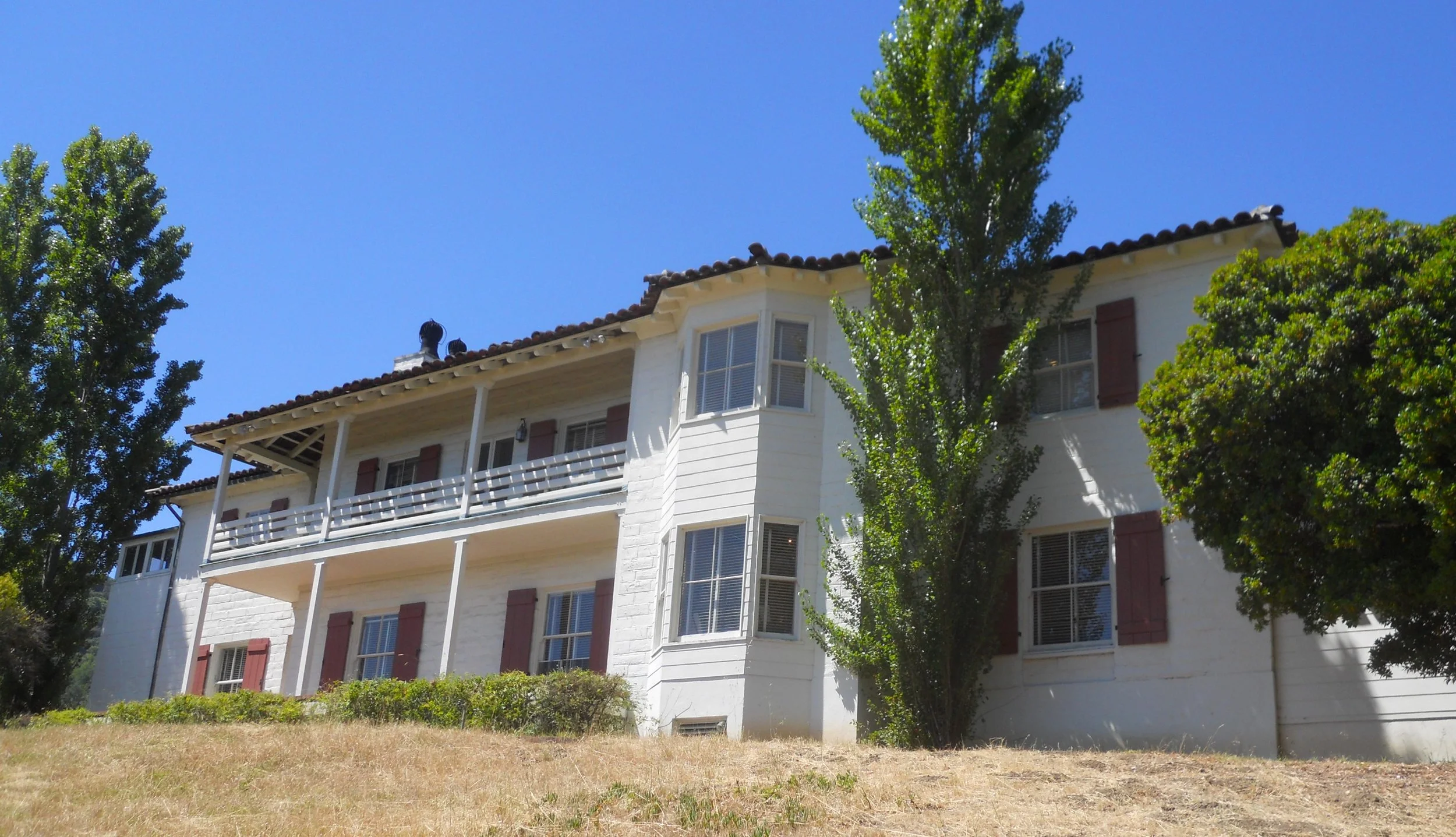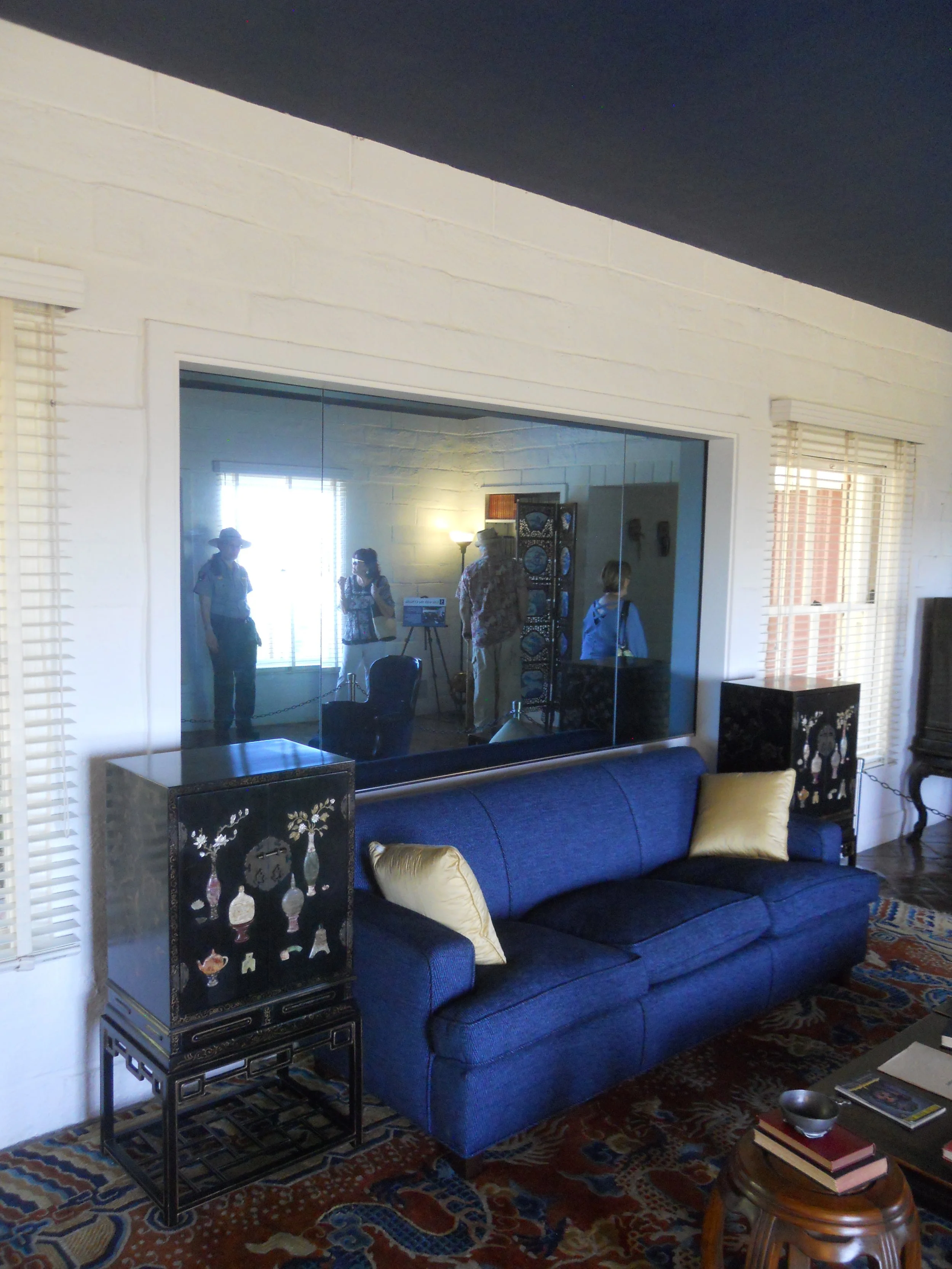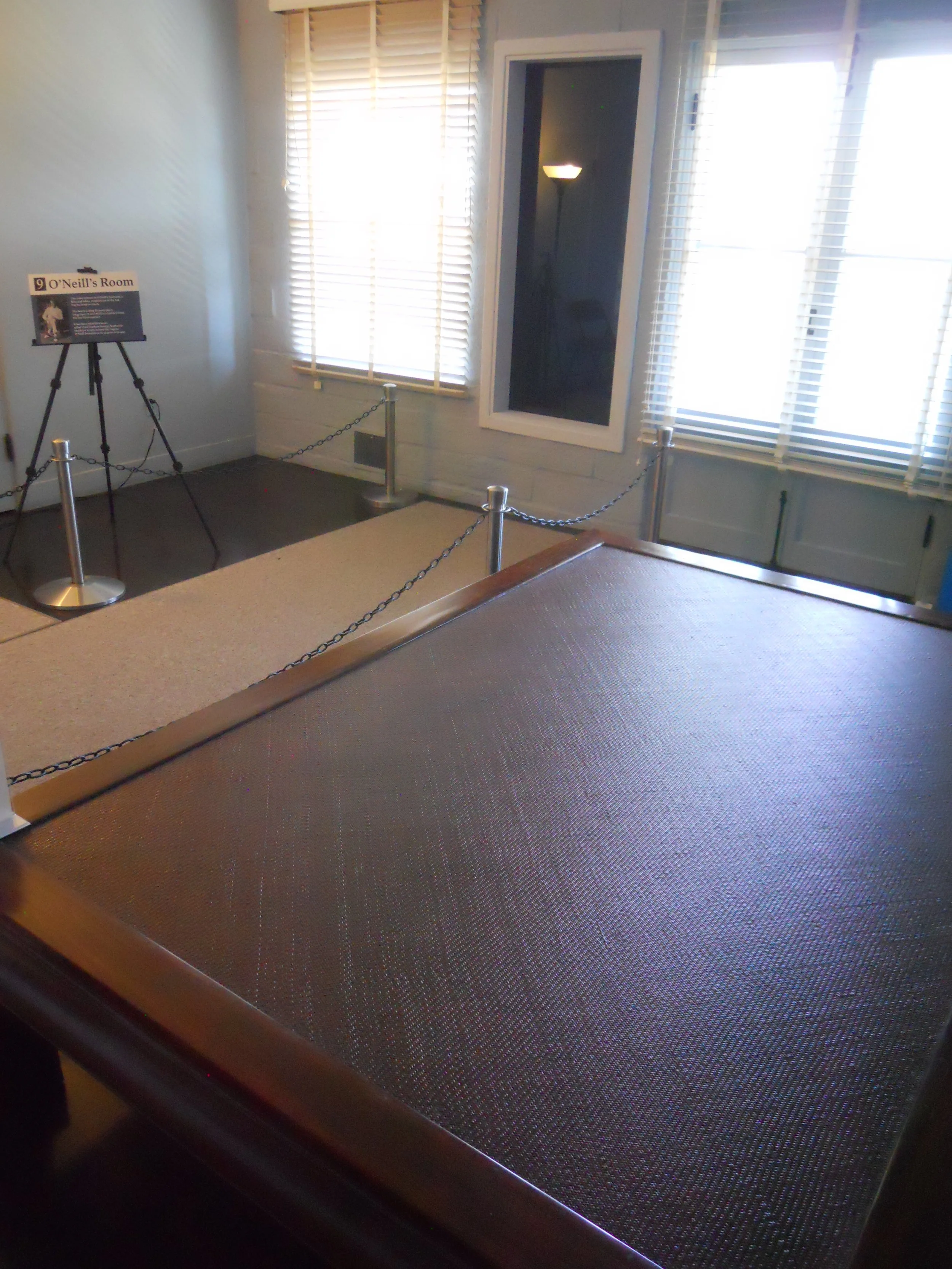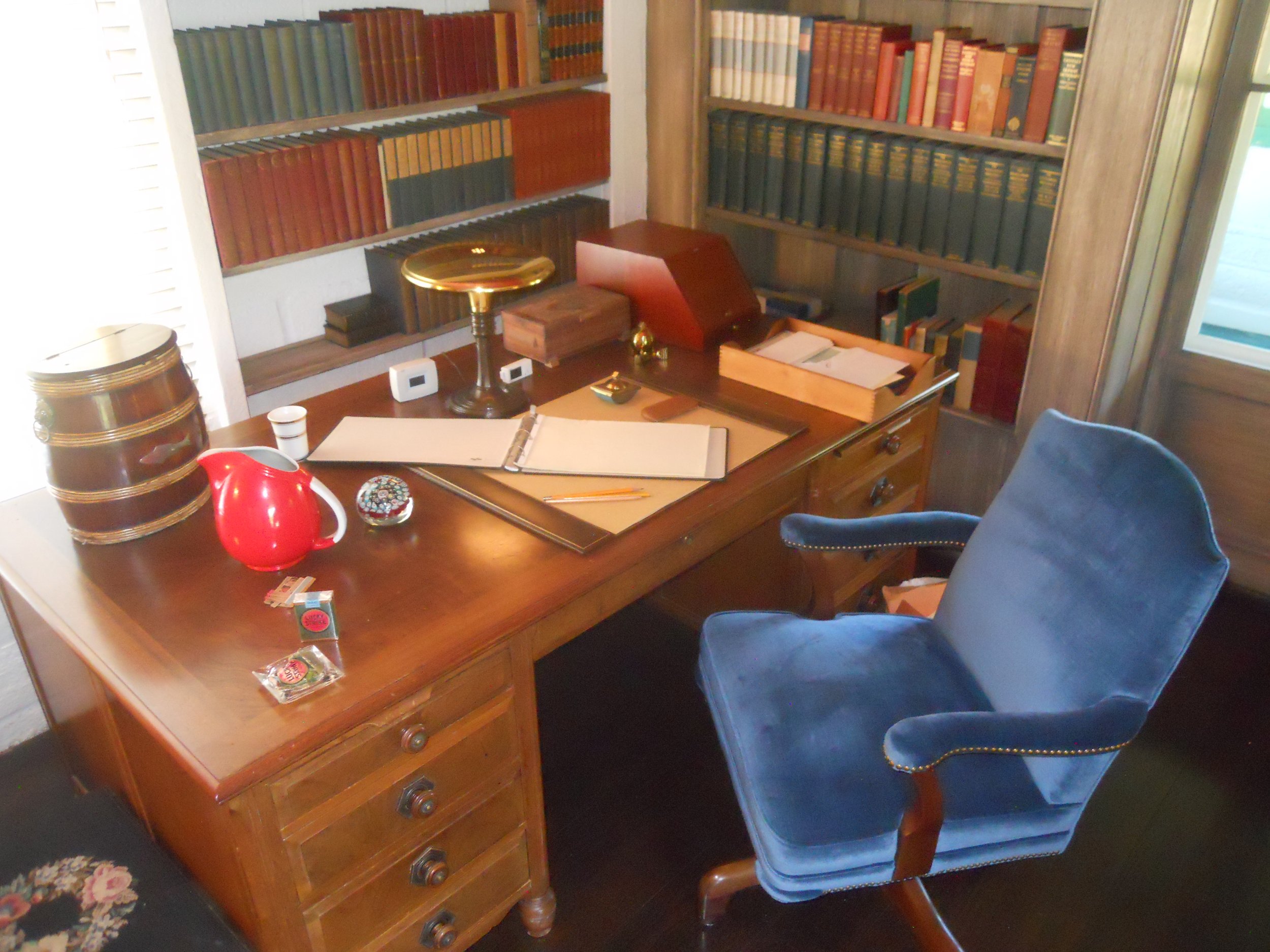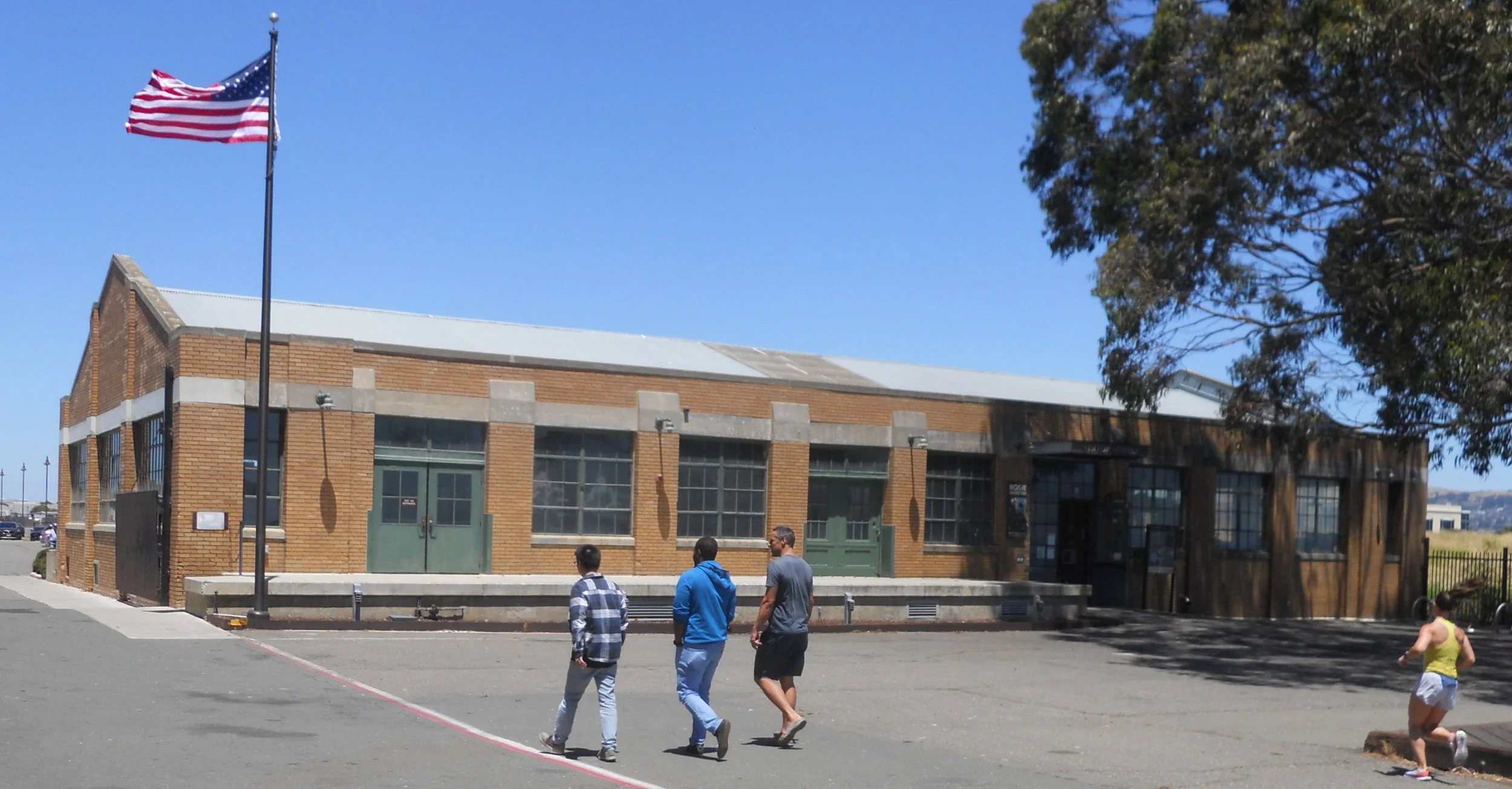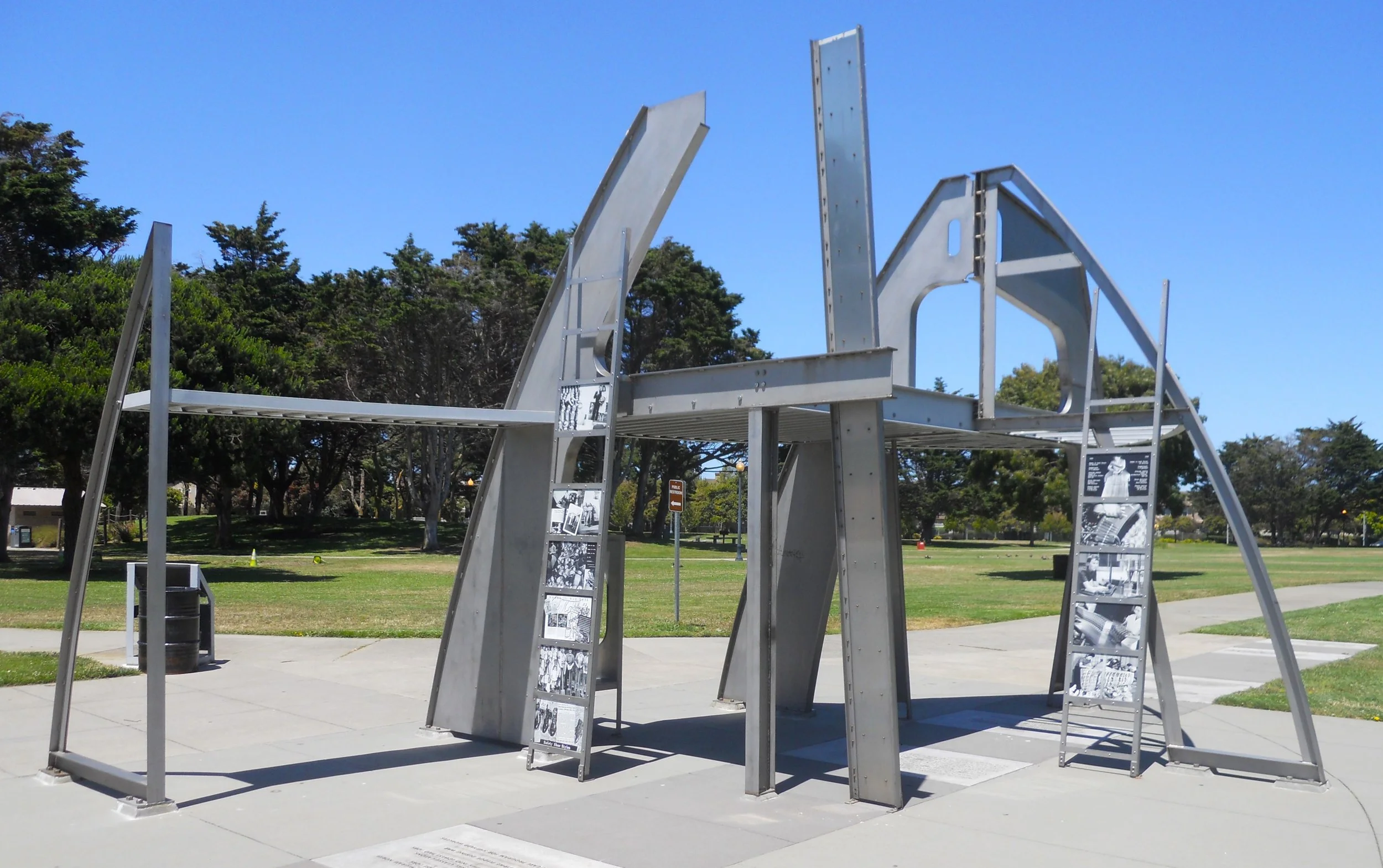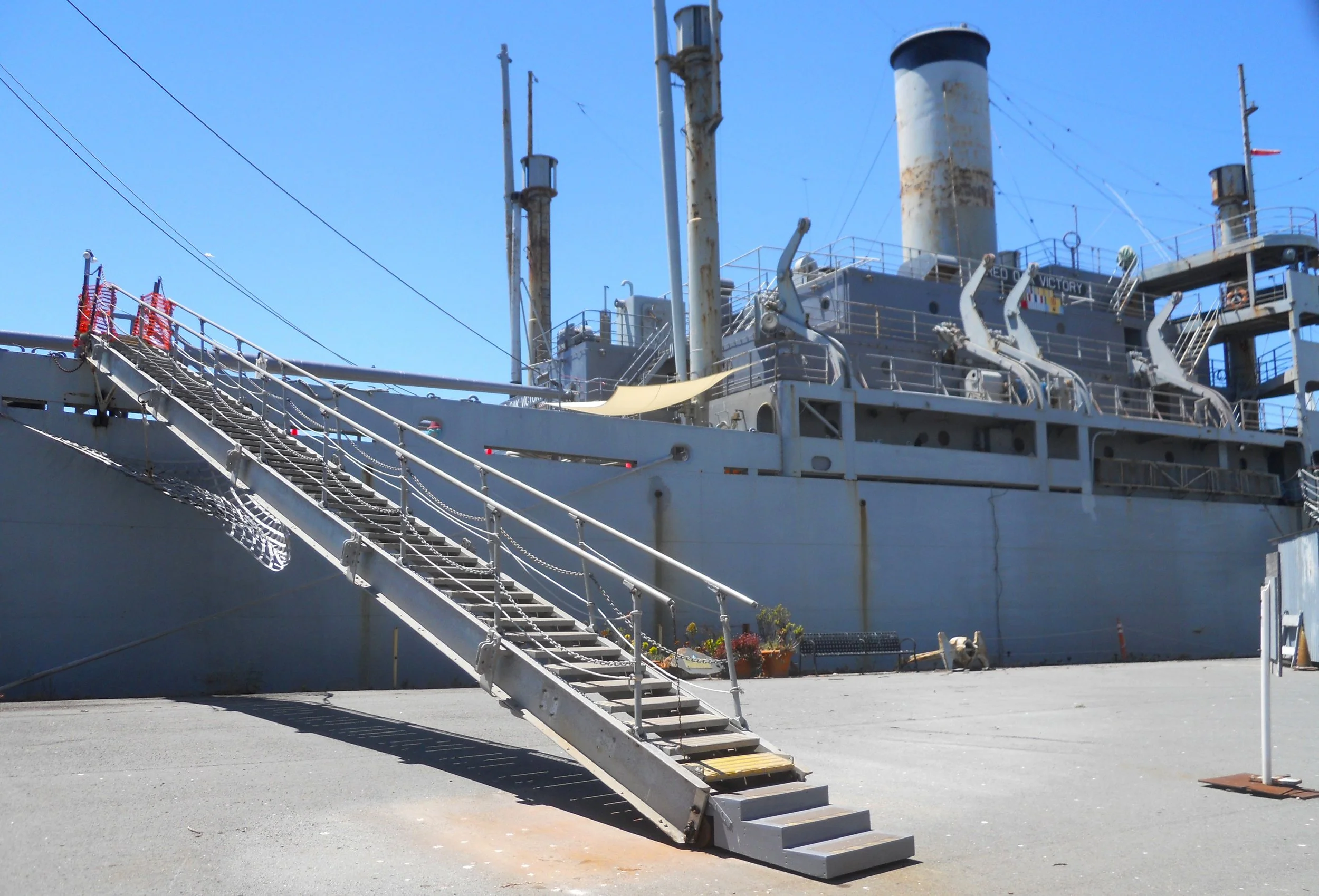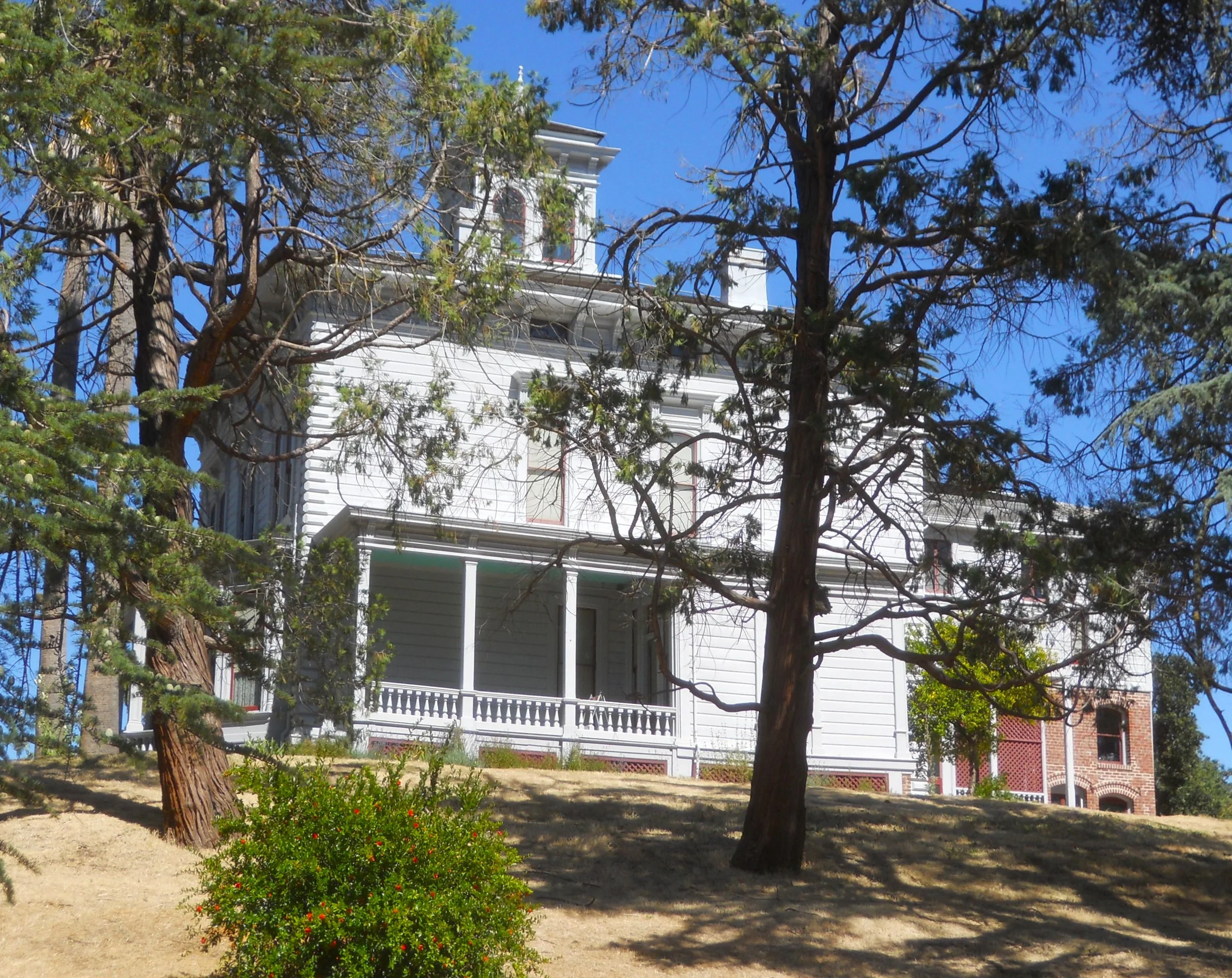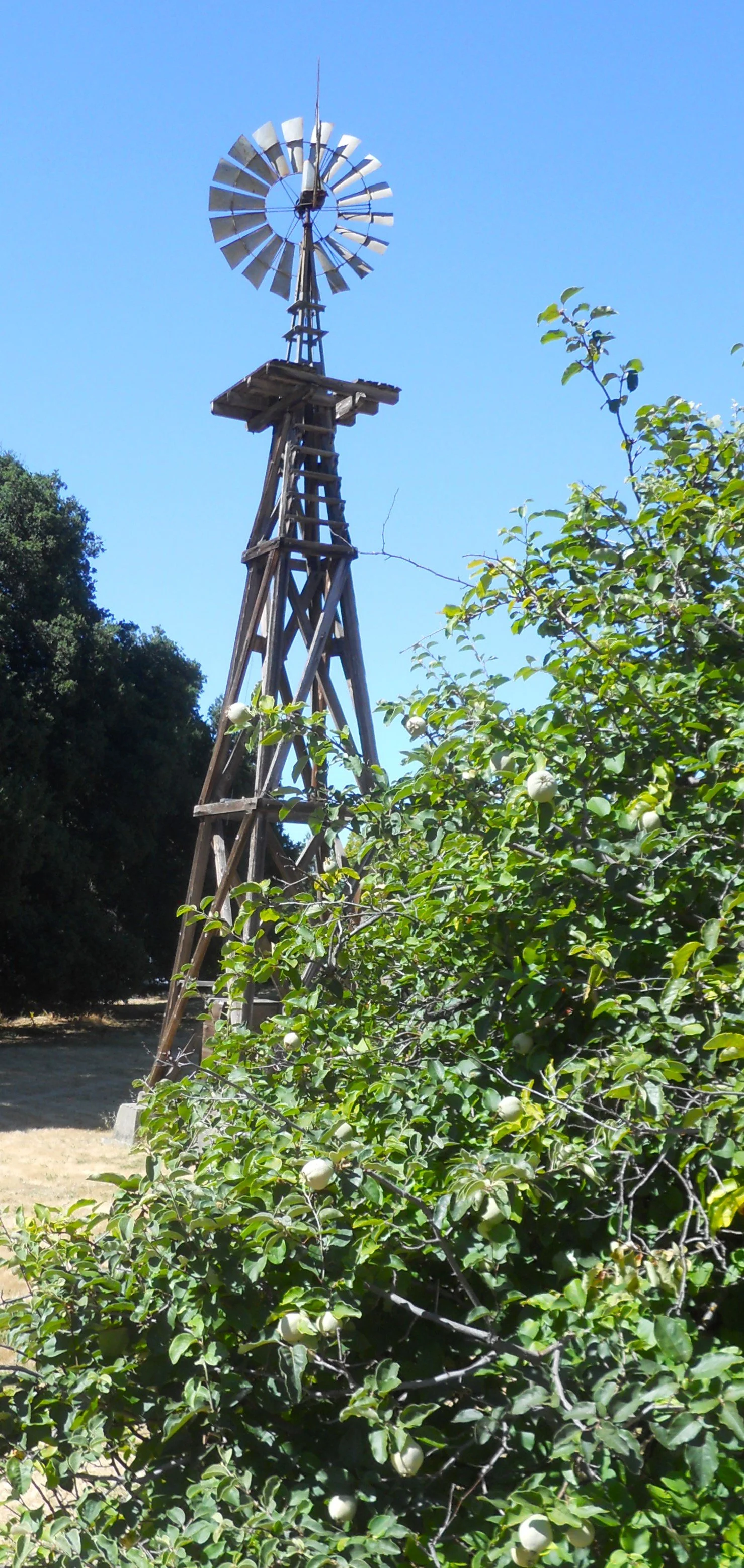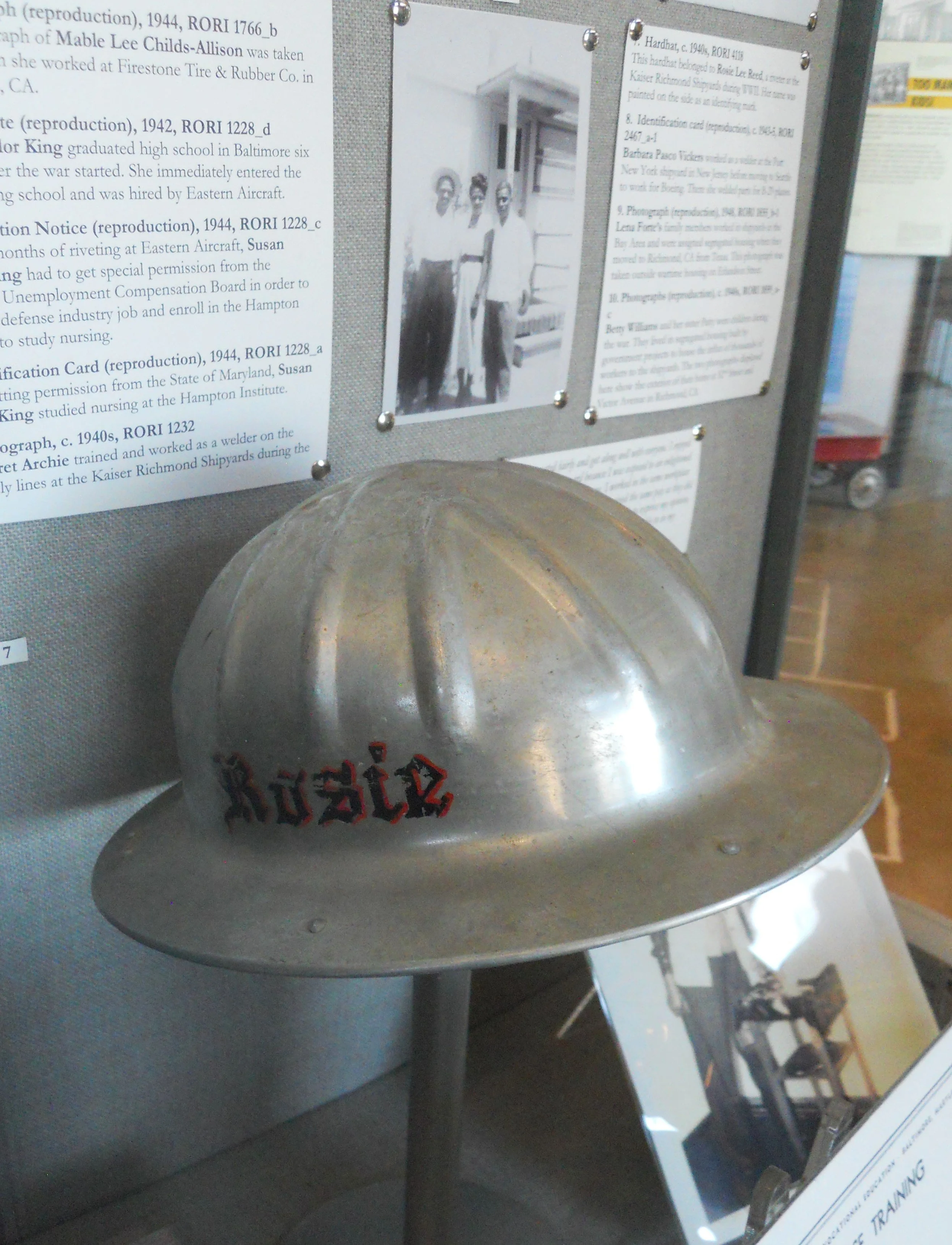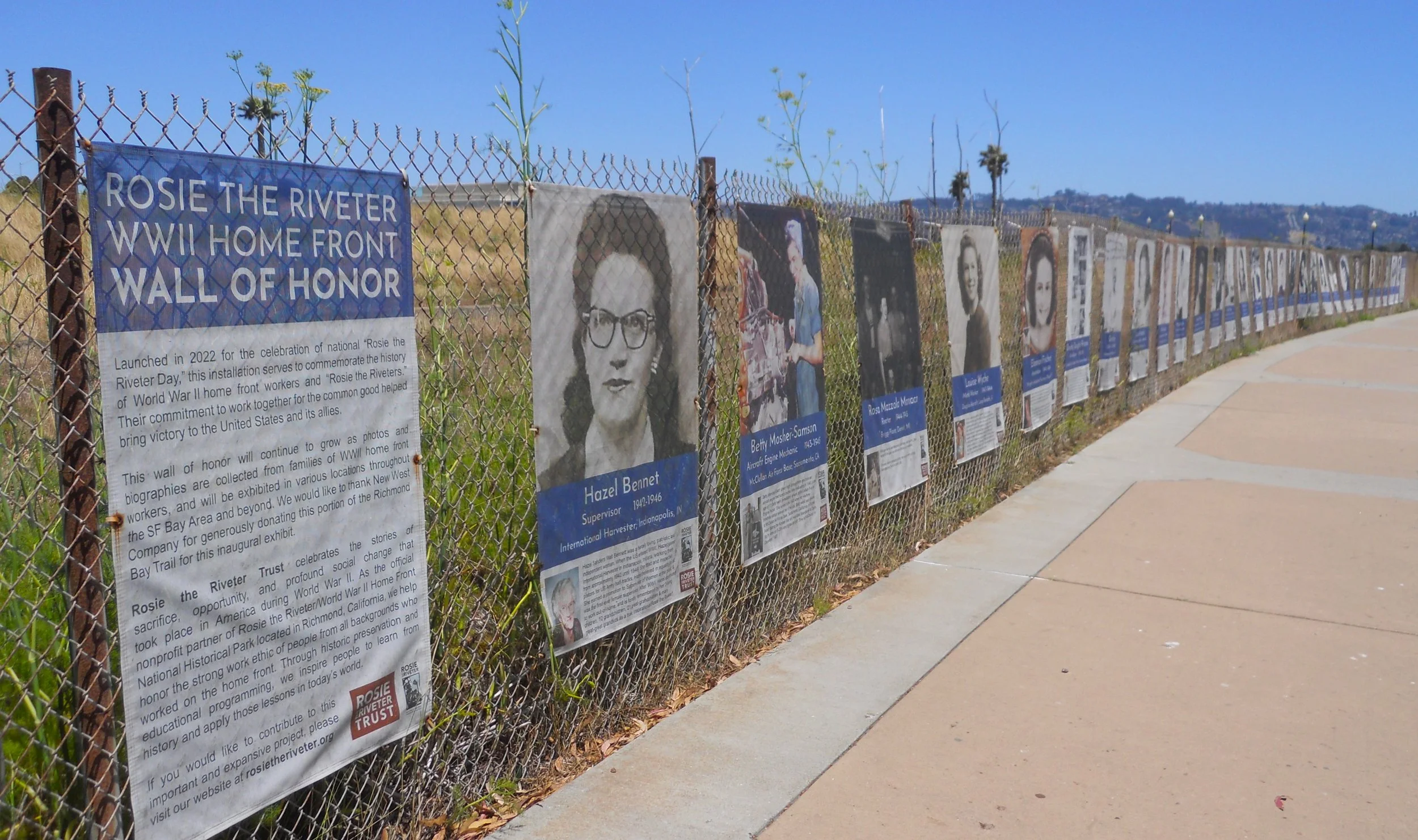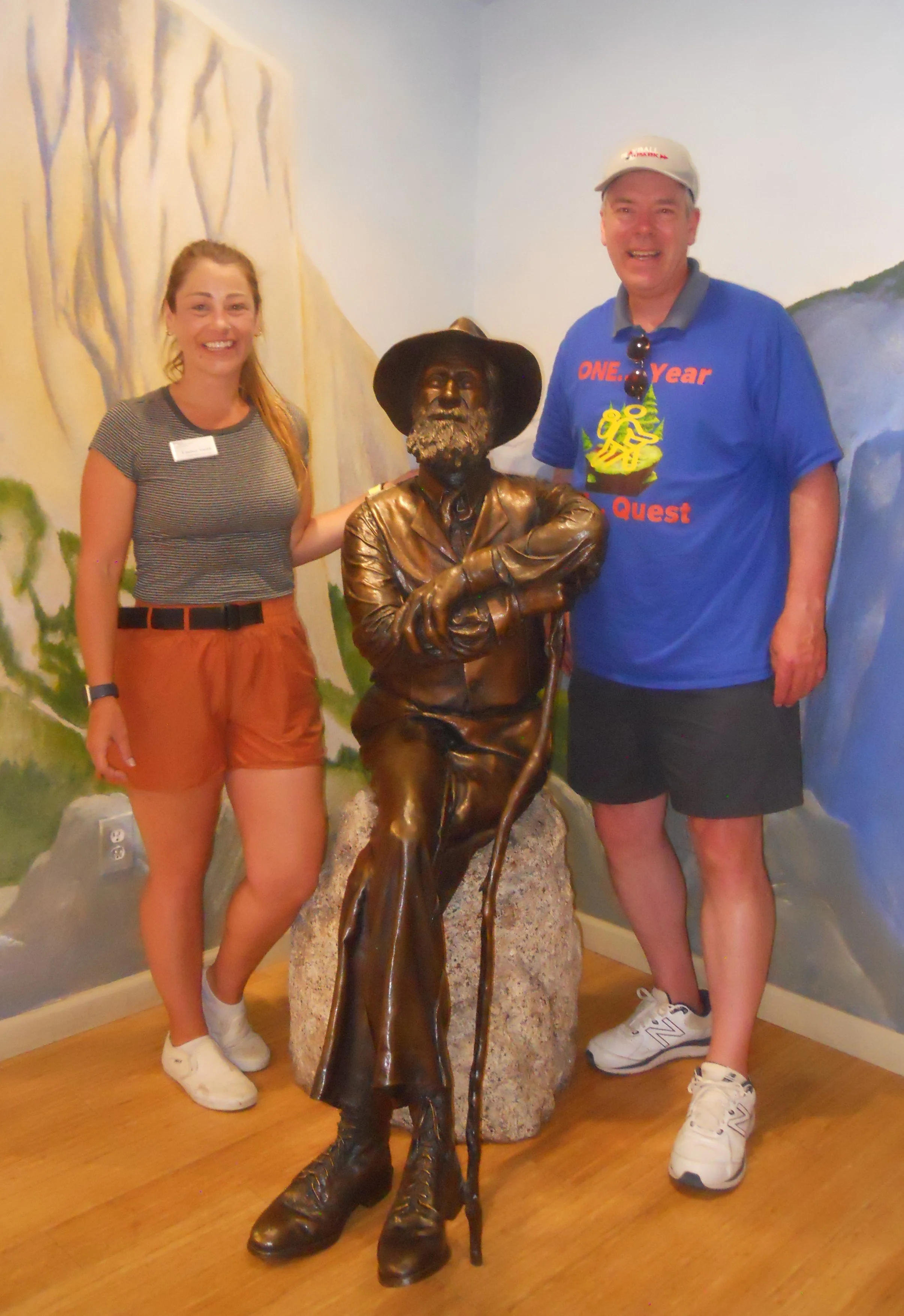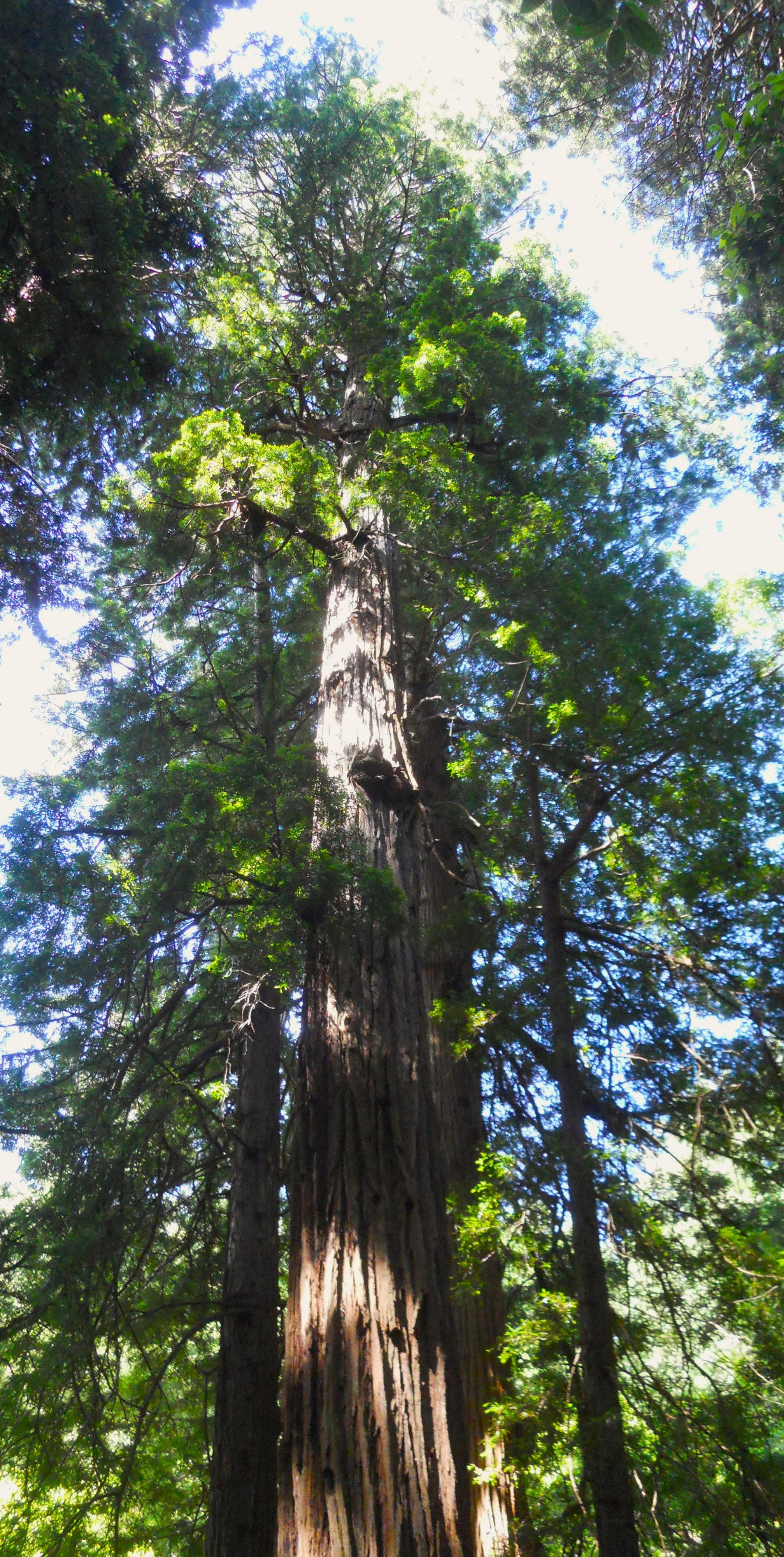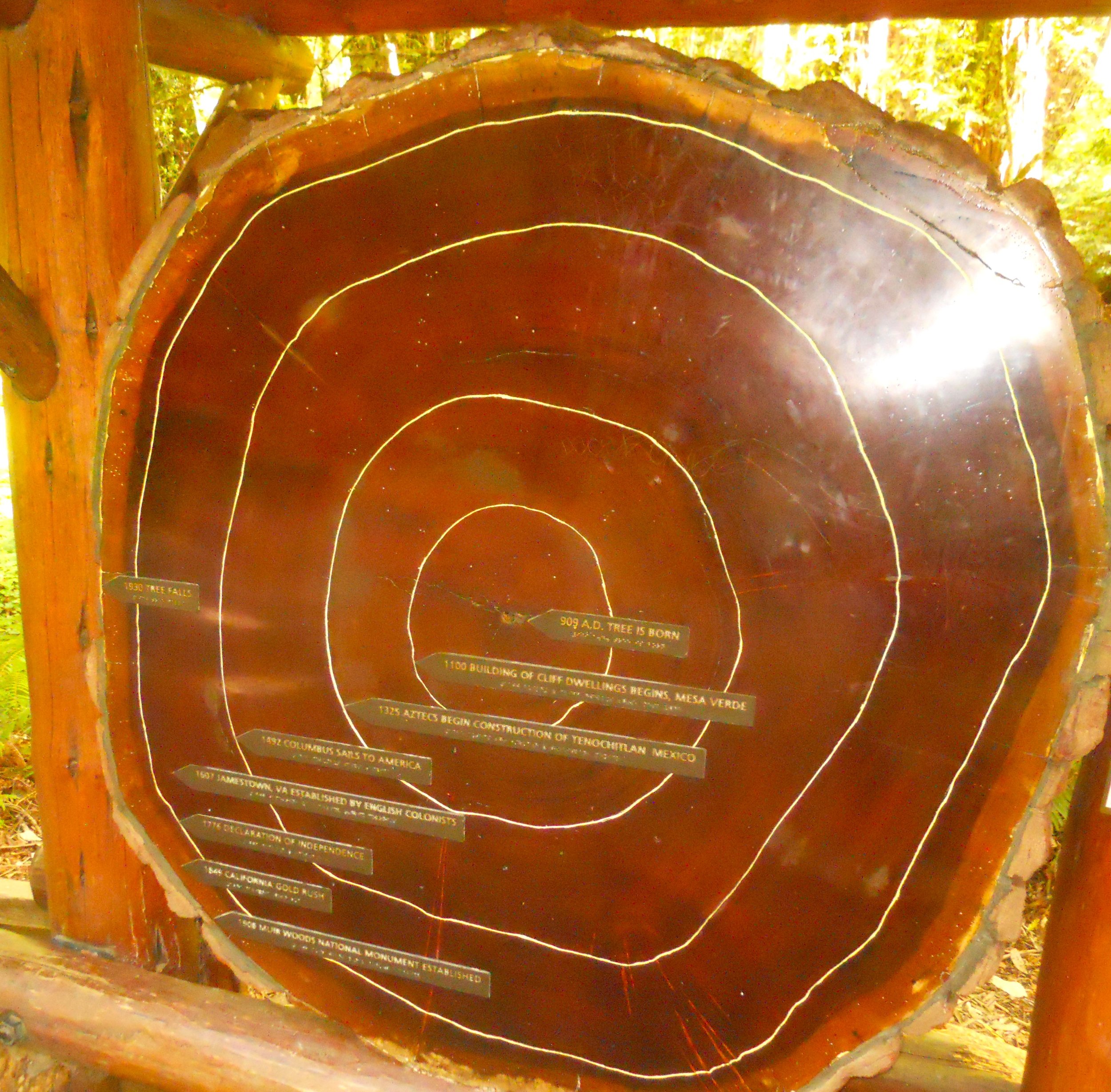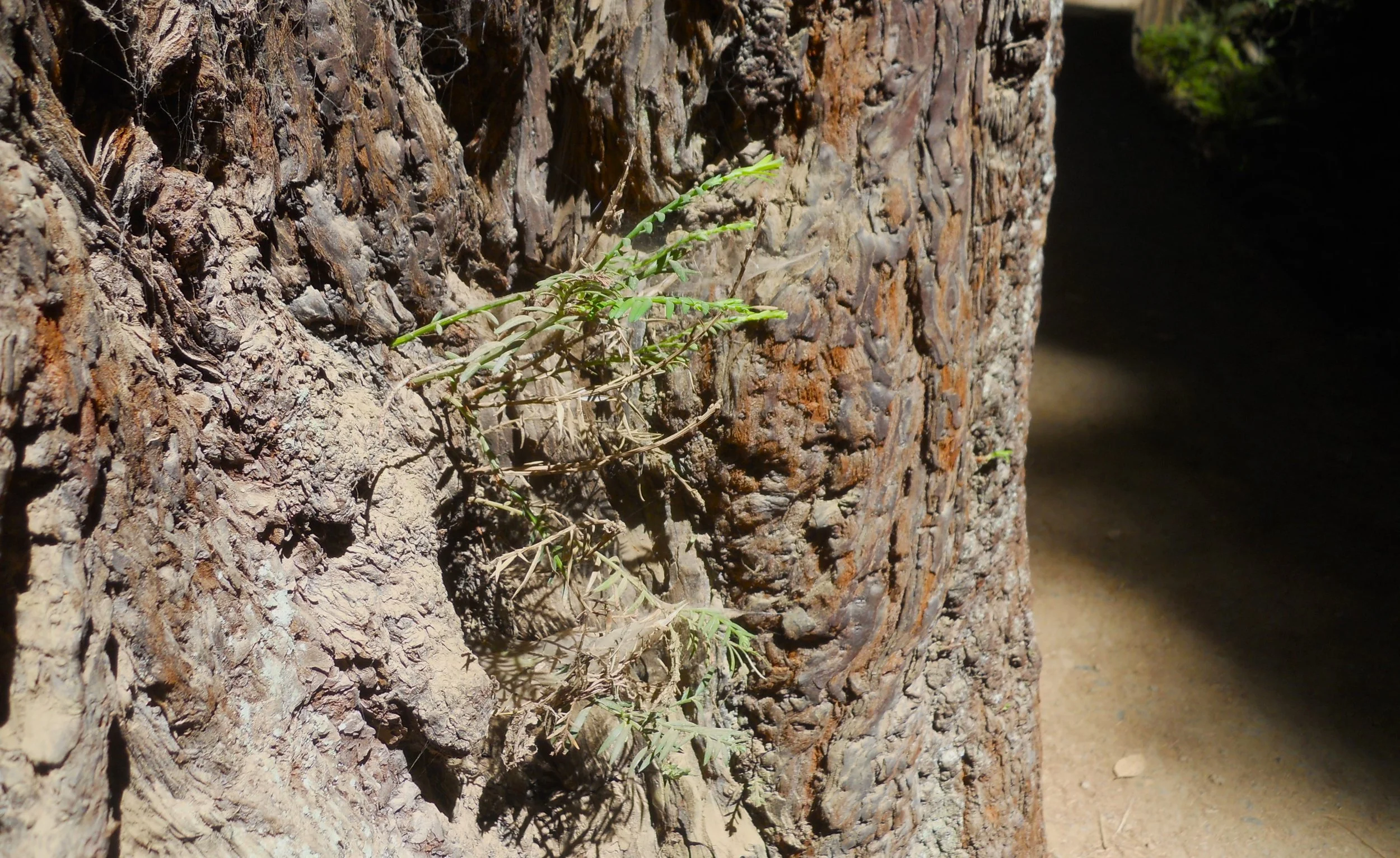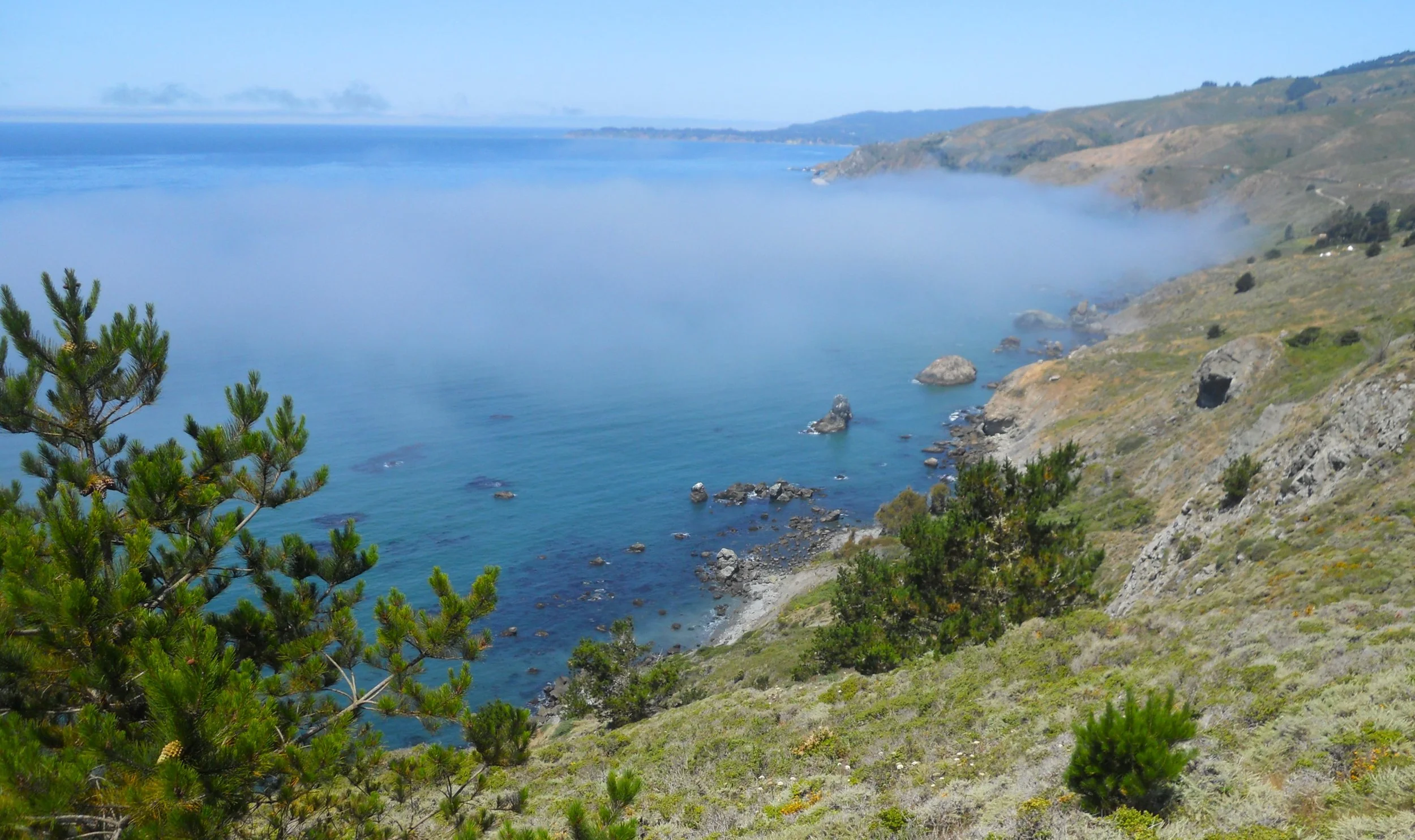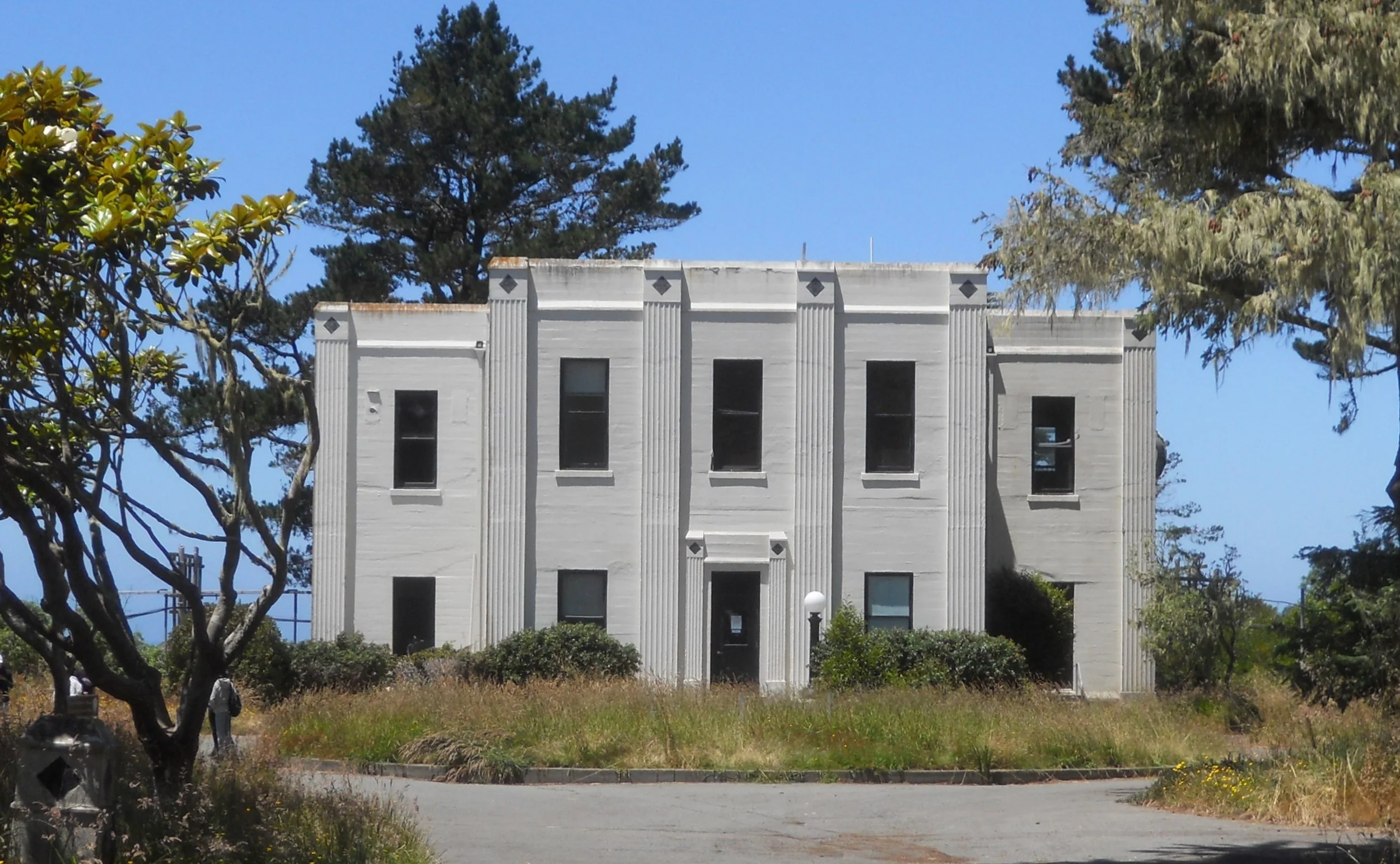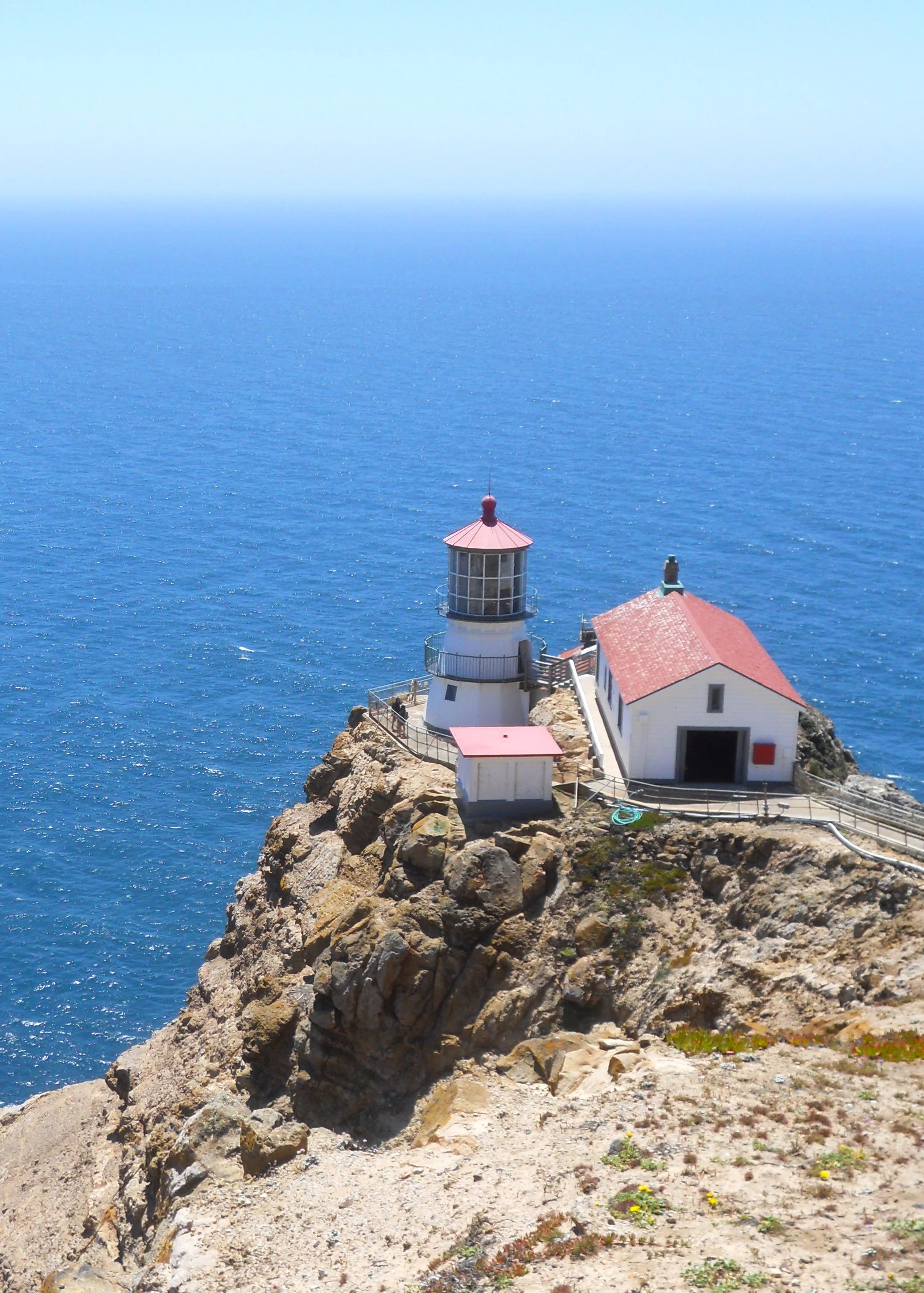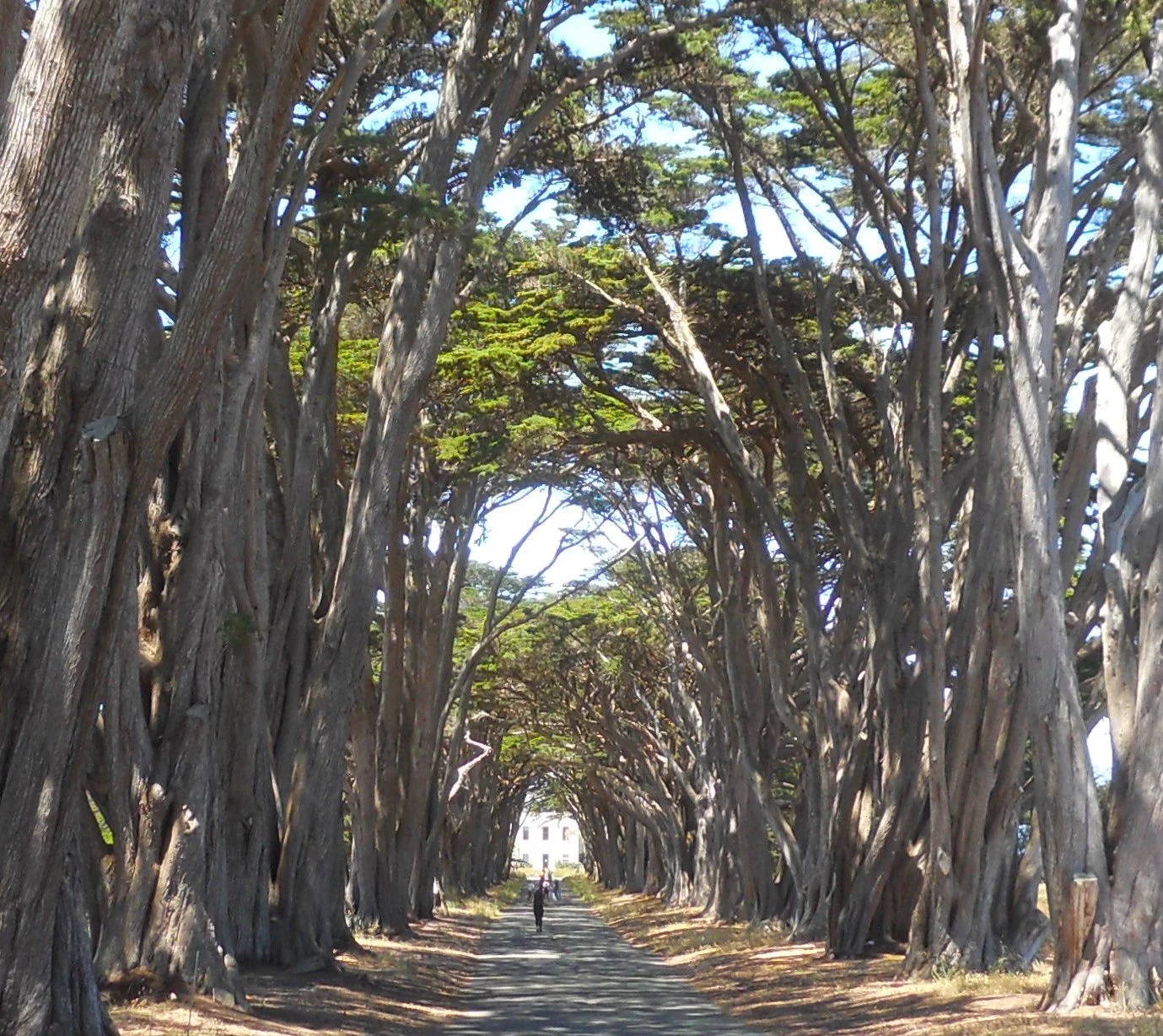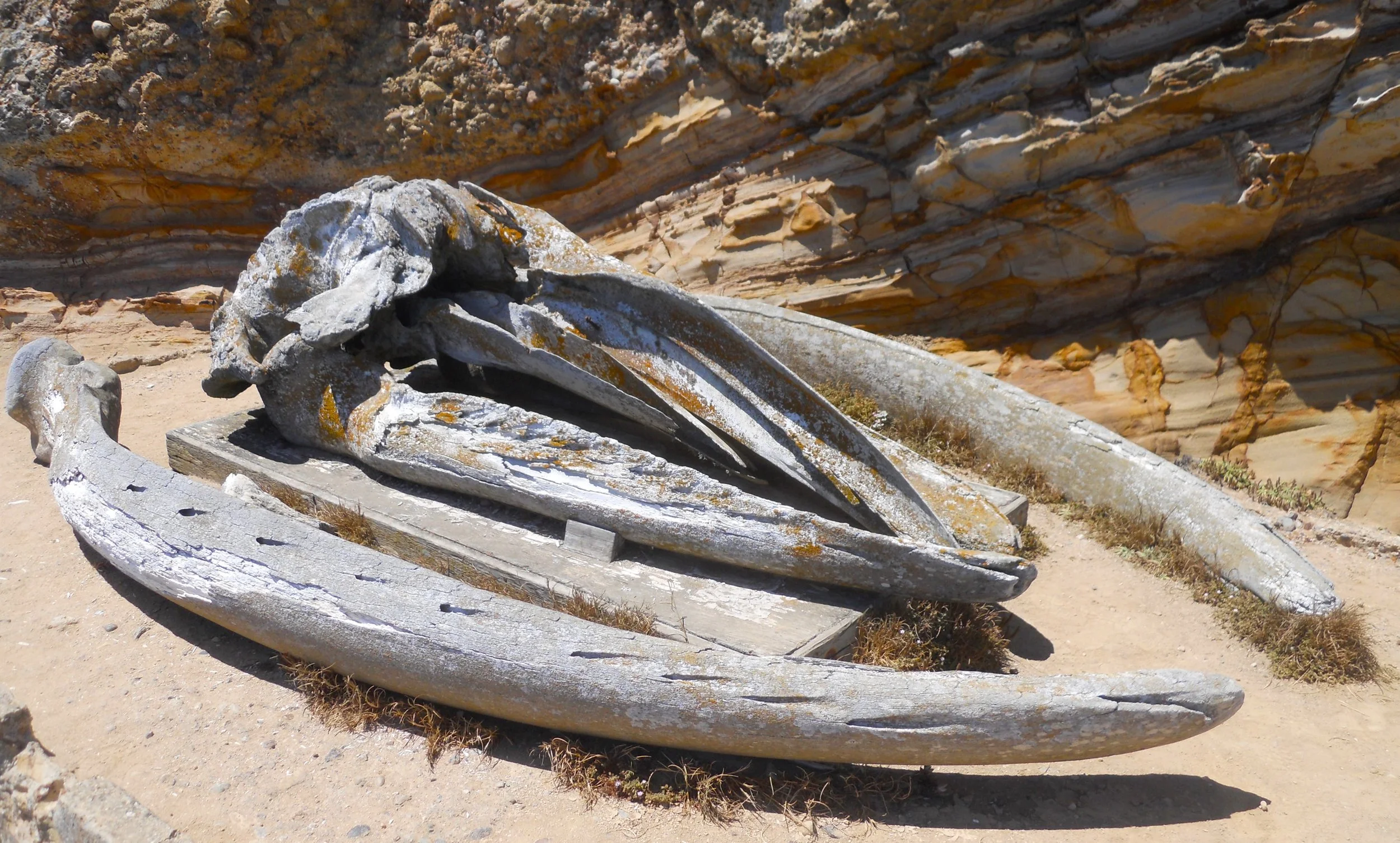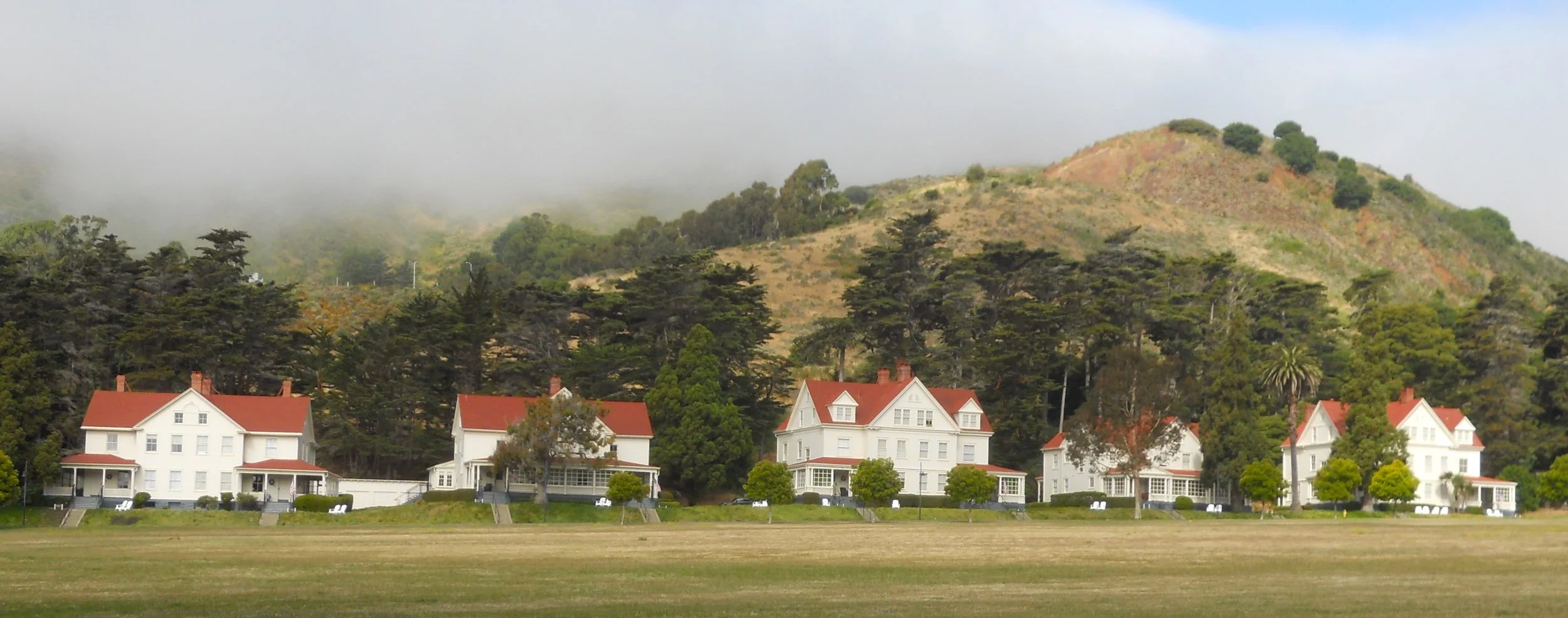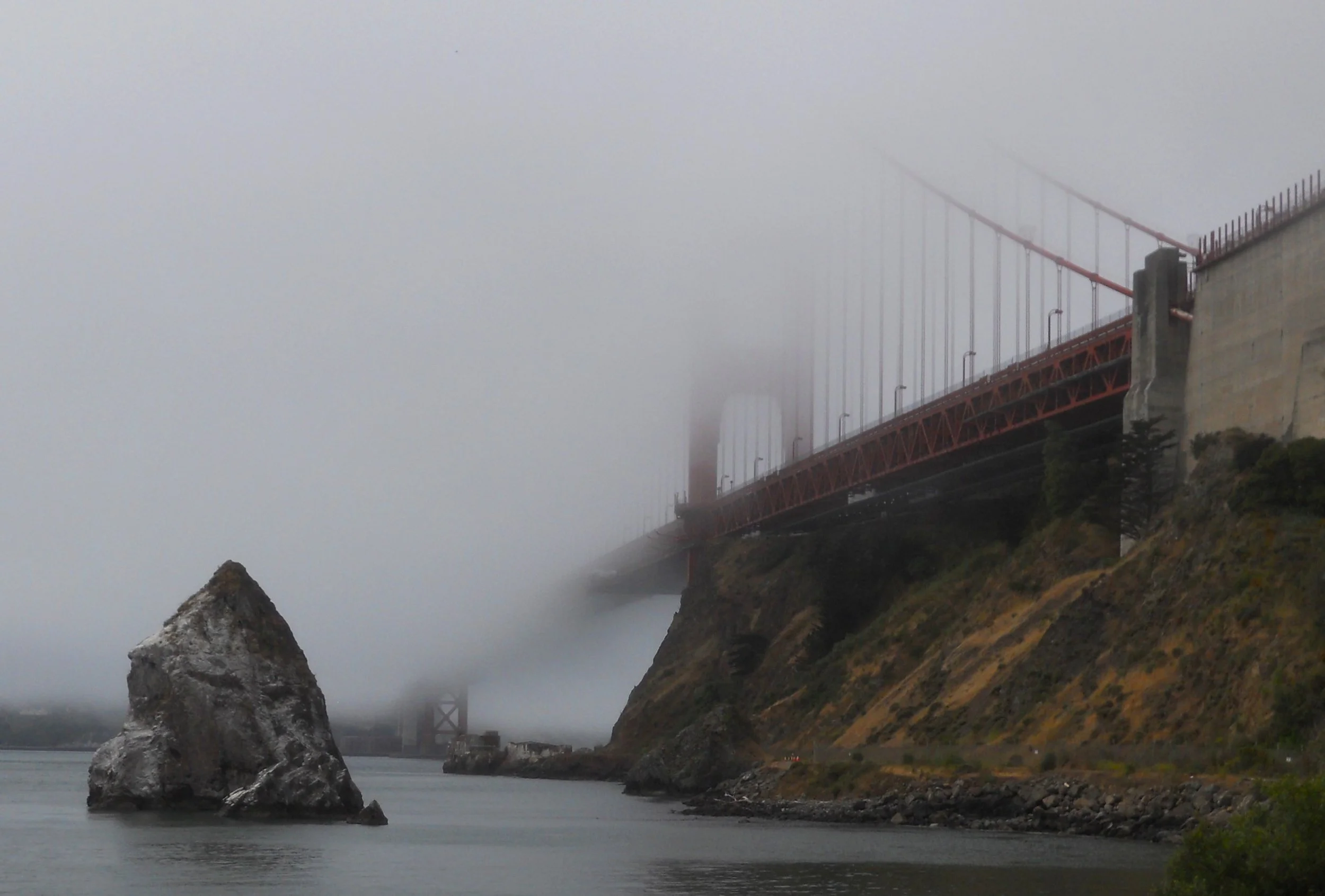DAY 3 (July 15) - Port Chicago Naval Magazine NMem was all abuzz today. This was the annual memorial commemoration, the 79th. On July 17, 1944, the greatest home front tragedy of WW2 occurred, at 10:18 PM. The blast from the munitions ship S.S. E A Bryan measured 3.4 on the Richter scale, and was felt as far away as 450 miles. 320 men, mostly African Americans, lost their lives, with nearly 400 more wounded. The blast was so devastating that only 48 men’s remains were positively identified. All that remains of the pier is in the one photo. Debris reached 12,000 feet, with the fireball being 3 miles in diameter. A second ship, the S.S. Quinault Victory, was birthed next to the Bryan. It was obliterated. A piece from one of the ships lays on the ground next to the water. Four plaques list the names of the 320 fallen men. Rail lines were used to bring the munitions to the base. Revetments dot the landscape. I was told the base has been very active this year loading ships for Ukraine. Six people in attendance have direct ties to three sailors who died that night, one being a son. He was given a U.S. flag which was flown over the memorial this morning.
Fort Point NHS is located right under the south end of the Golden Gate Bridge. Yes, the fog was still rolling in, even at 3 PM. The Fort Point Lighthouse was placed on the top of the fort, to help guide ships into the Bay. It was turned off in 1934 after the completion of the Golden Gate Bridge. The fort has three levels, plus the barbette tier on the roof. Twenty-one guns sat on top and could swivel, protecting approaches from land or sea.
The Spanish arrived at the Bay in 1769. From that time period there remains six cannon which the Spanish used to fortify the area. One of those cannons is owned by the NPS and is on display in the first level of the fort. The date on the cannon is 1684 (towards the bottom of the photo, upside down).
The San Francisco Maritime NHP preserves the legacy of the waterfront activities which made San Francisco a great city. Most visitors come to see the great collection of sea faring ships at the Hyde Street Pier. A Monterey Fishing boat was in the work shed for some restoration. The boat was built in 1923, just a block away from where it now resides. The Eppleton Hall is a 1914 paddle tug, built in England.
The 1890 steam ferryboat Eureka was one of 42 boats that ferried passengers across the Bay, upwards of 50,000,000 people a year. But when the Bay Bridge and the Golden Gate Bridge were completed in the 1930s, ferryboats became dinosaurs… isn’t that the way with new technology? The Eureka made the last commercial run with passengers in the Bay in 1941. But visitors to this park can still walk on board to get a sense of those days gone by.
On a side note, Hyde Street is where the ferry boats docked for service to Sausalito. Cars on highway US 101 going north used the ferries. Therefore, the pier was part of this famous Redwood Highway. Again, once the Golden Gate Bridge was in operation, US 101 was diverted to that technological marvel.
